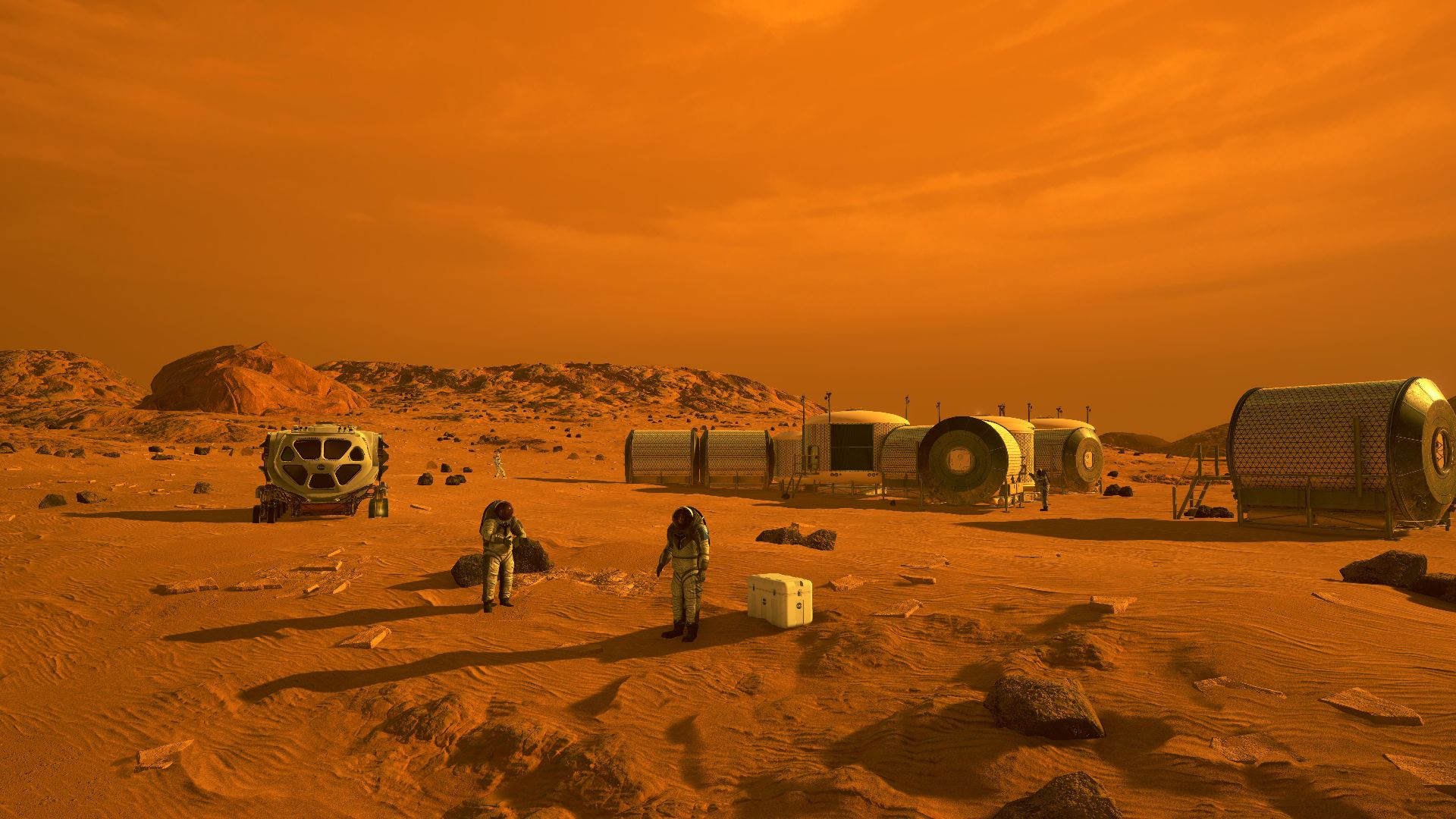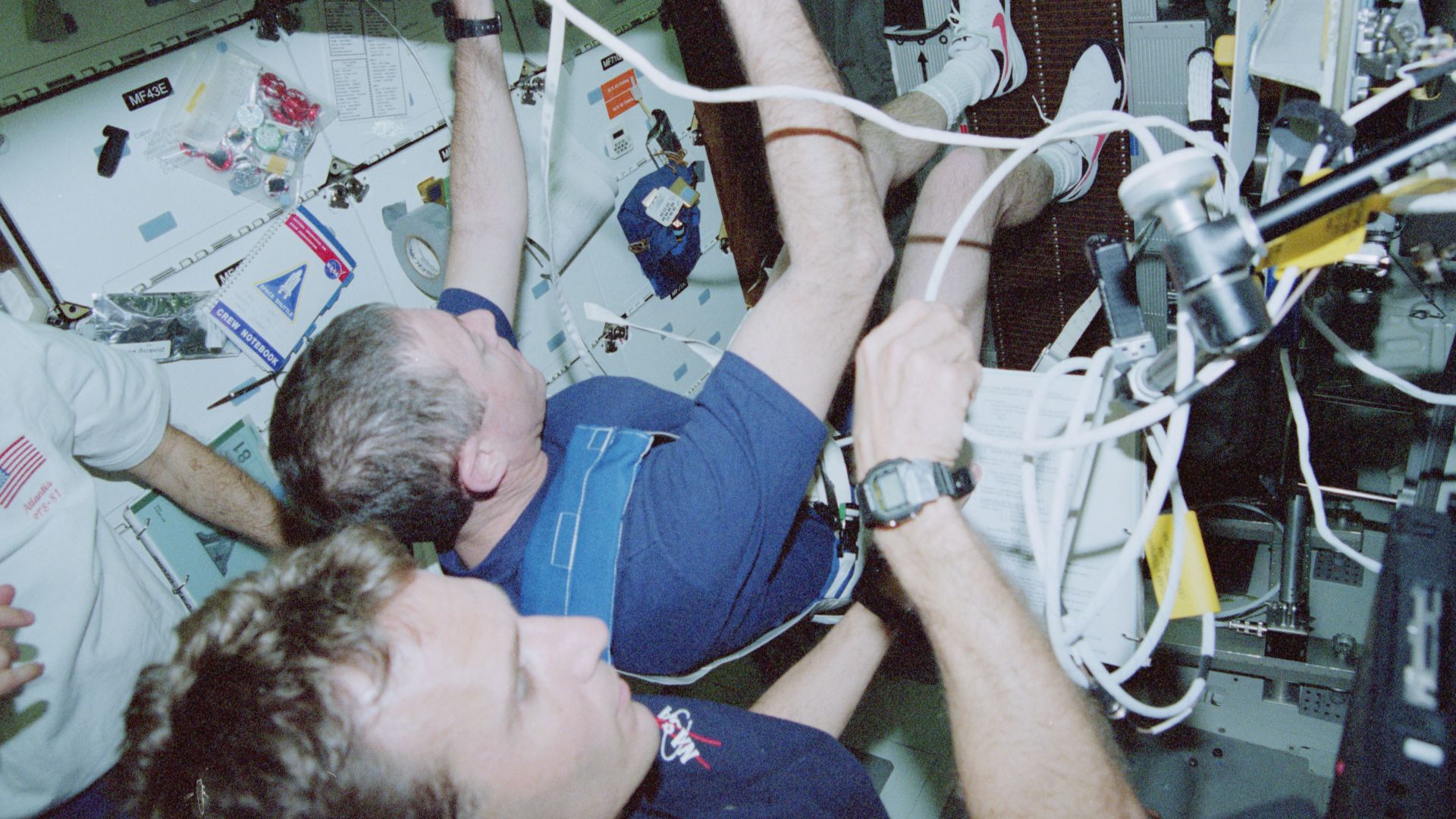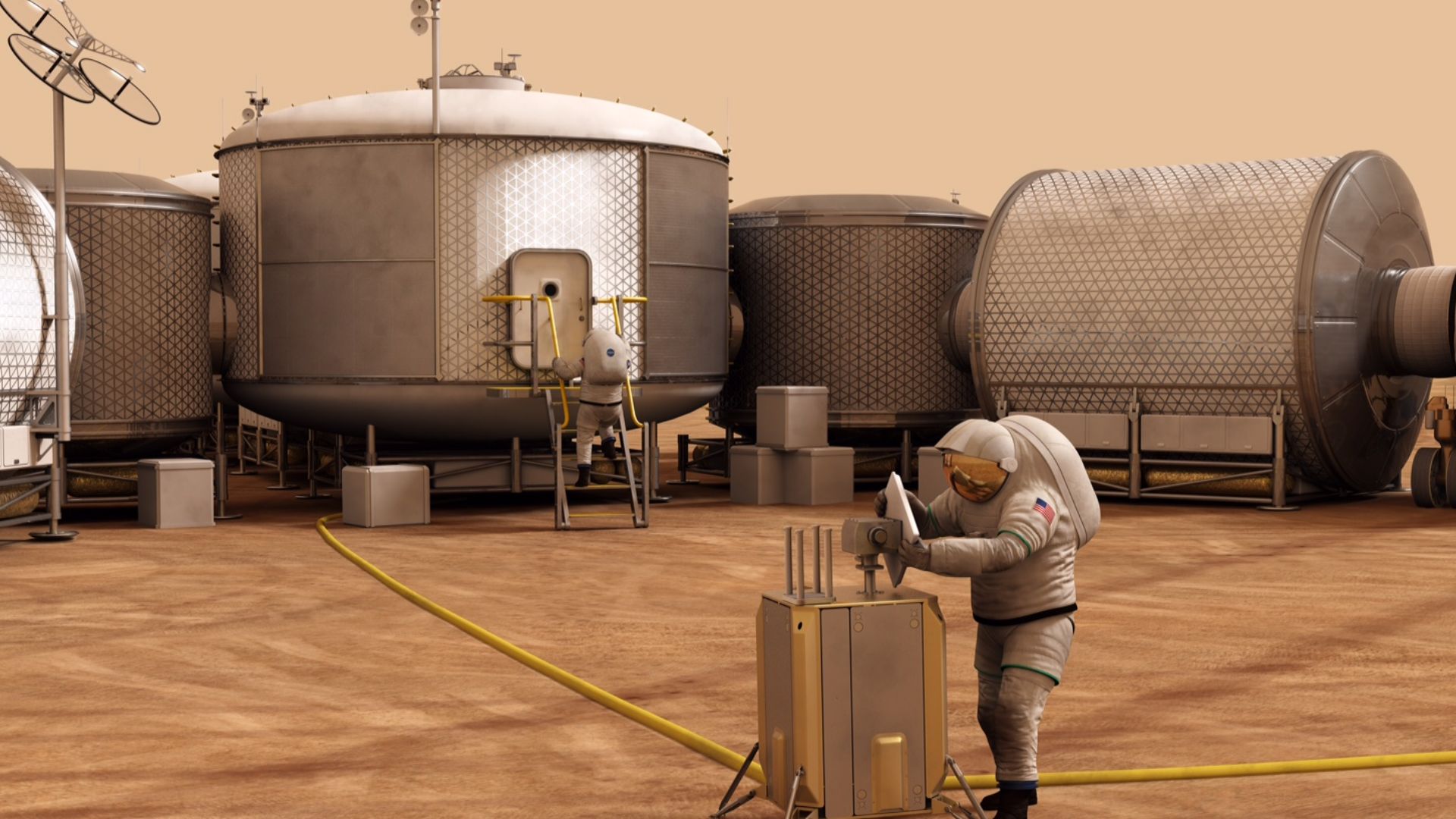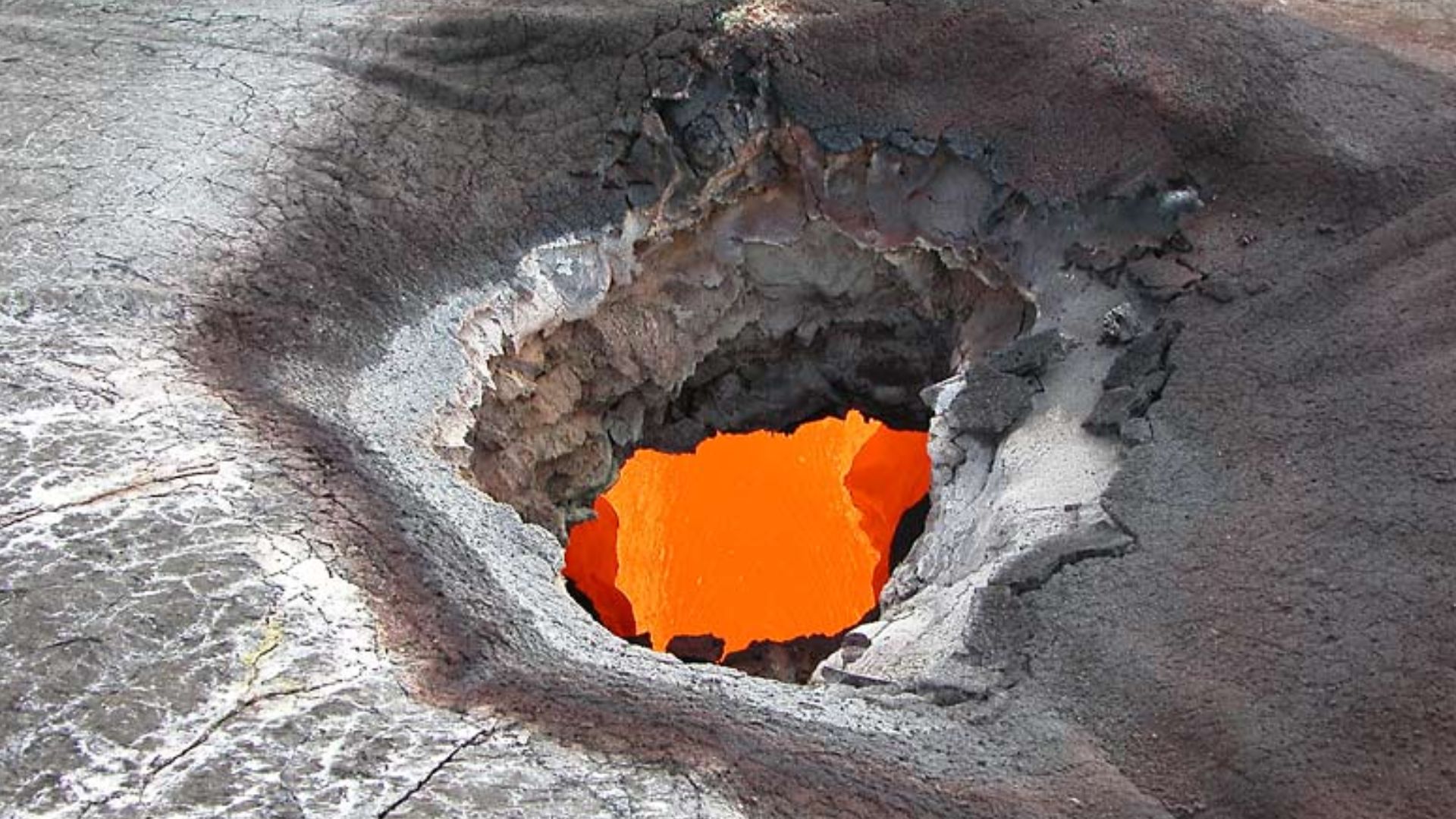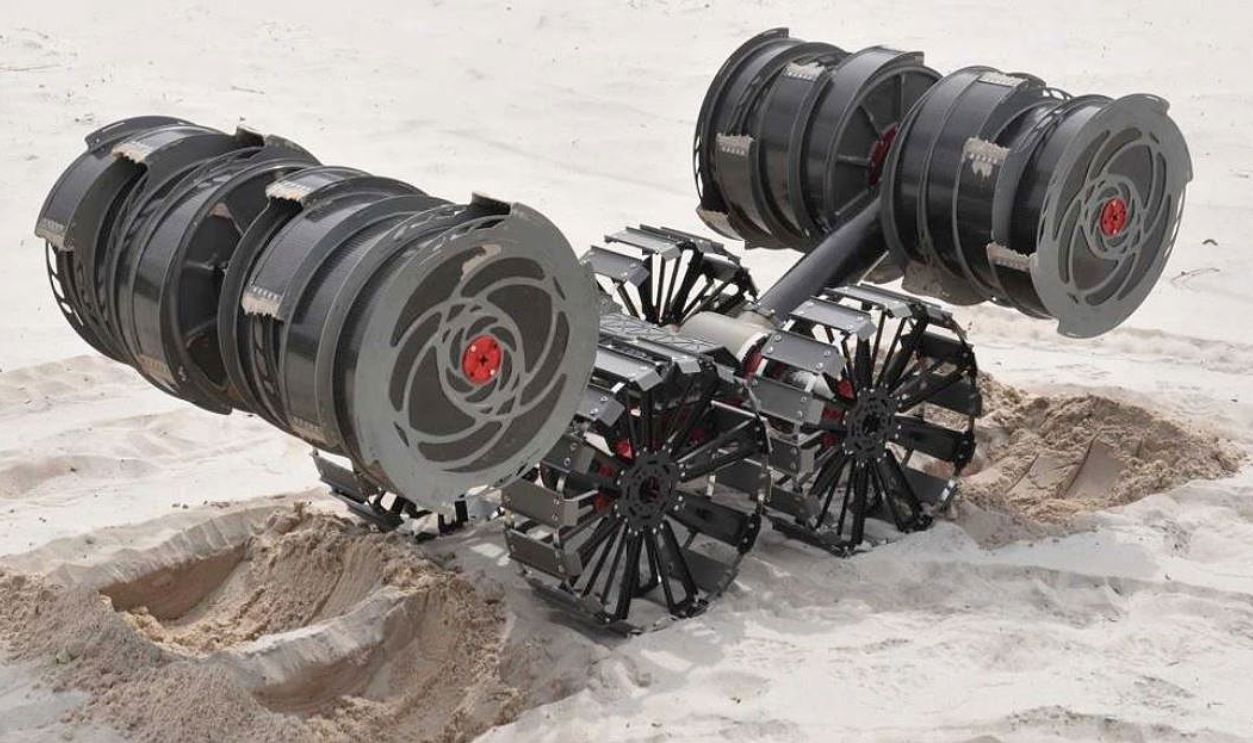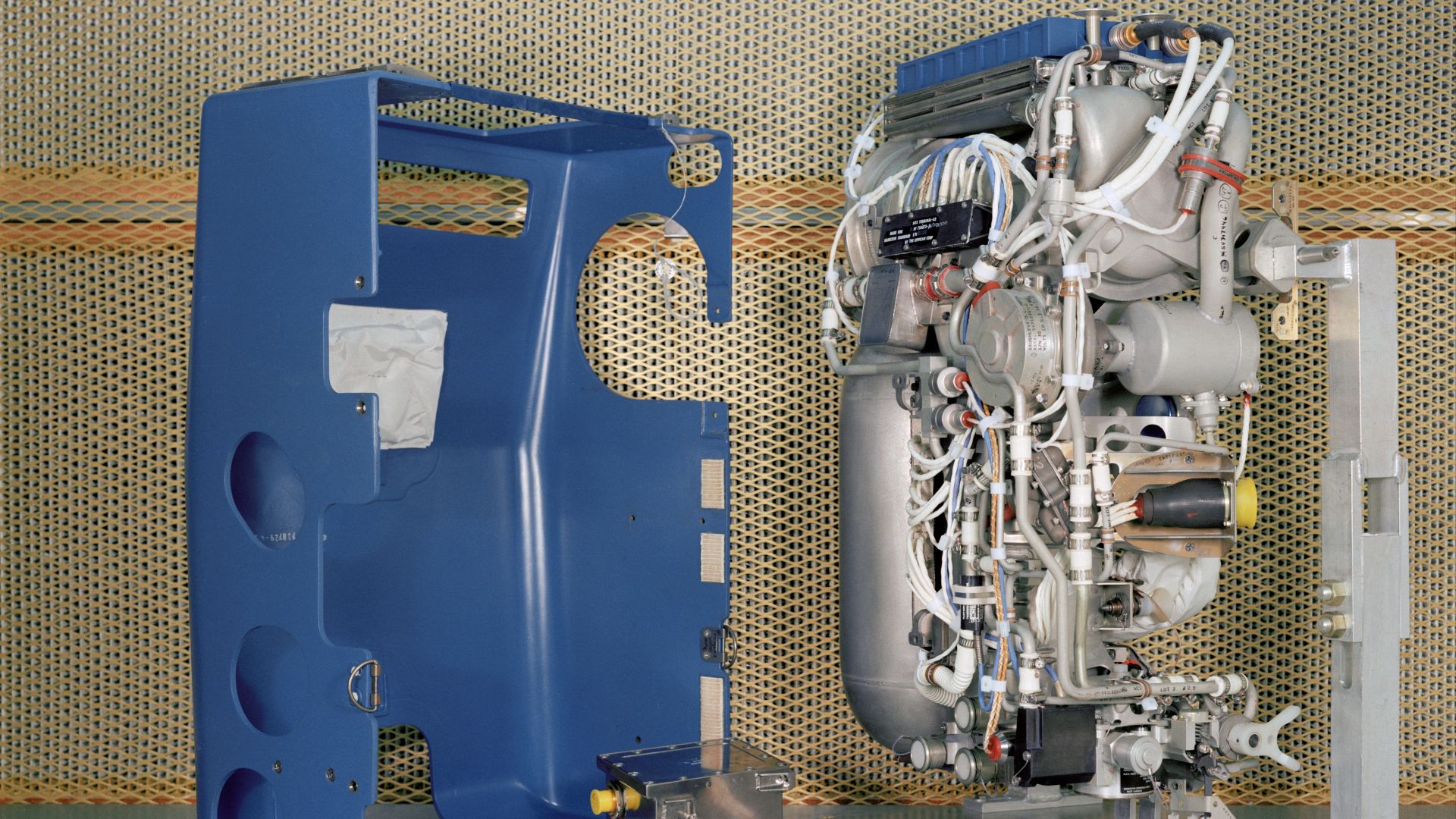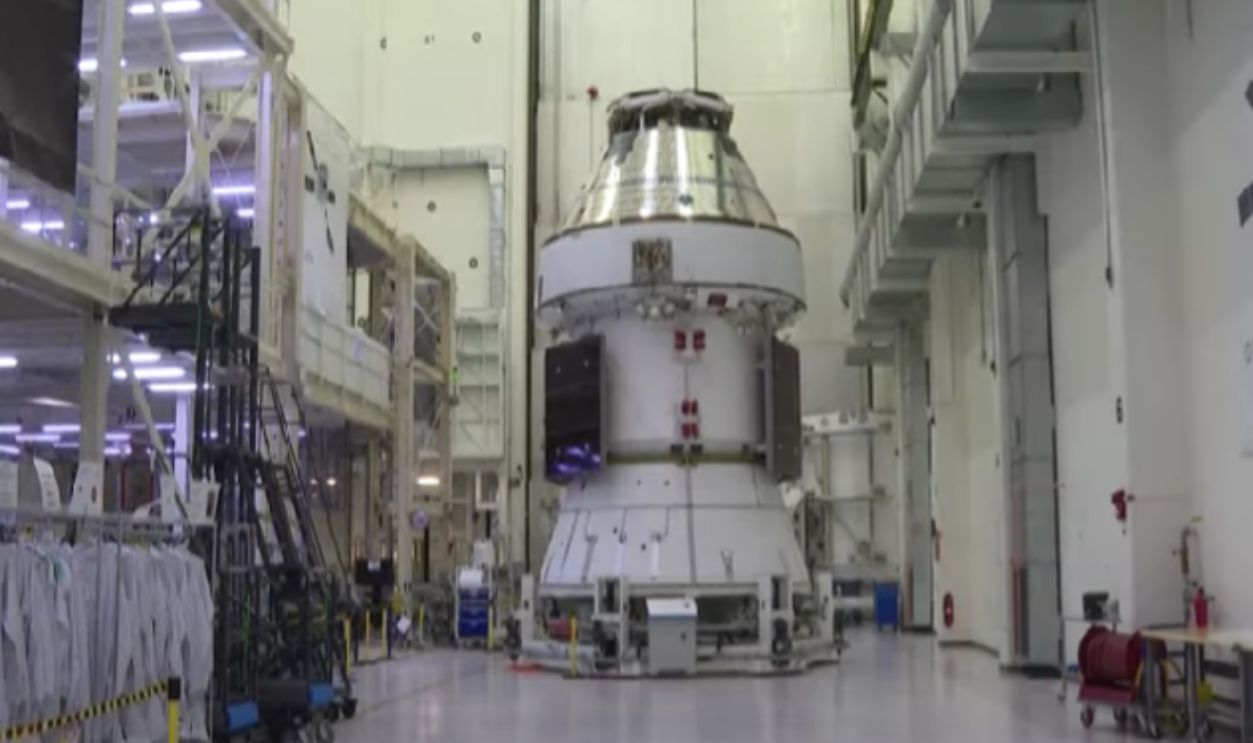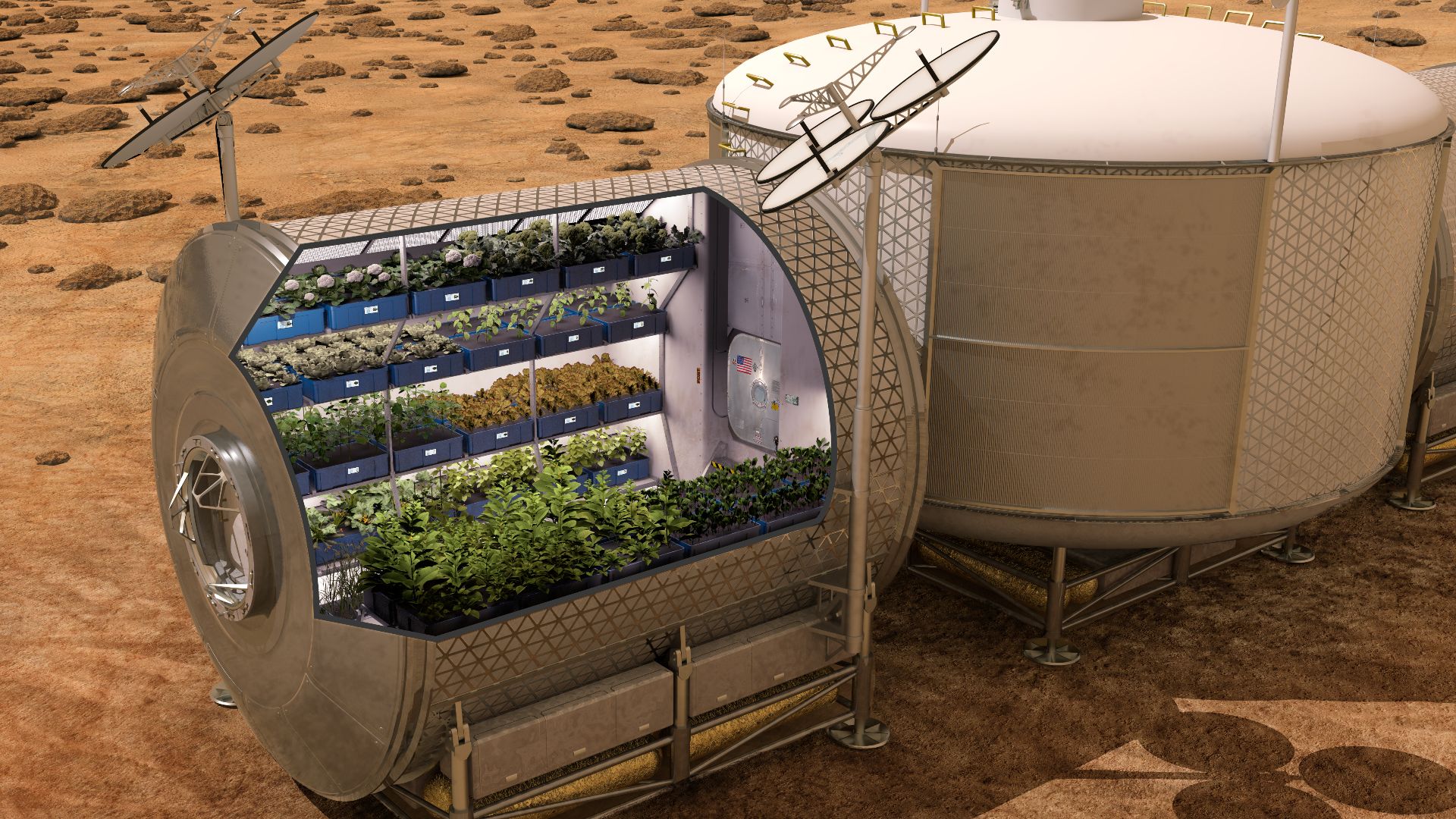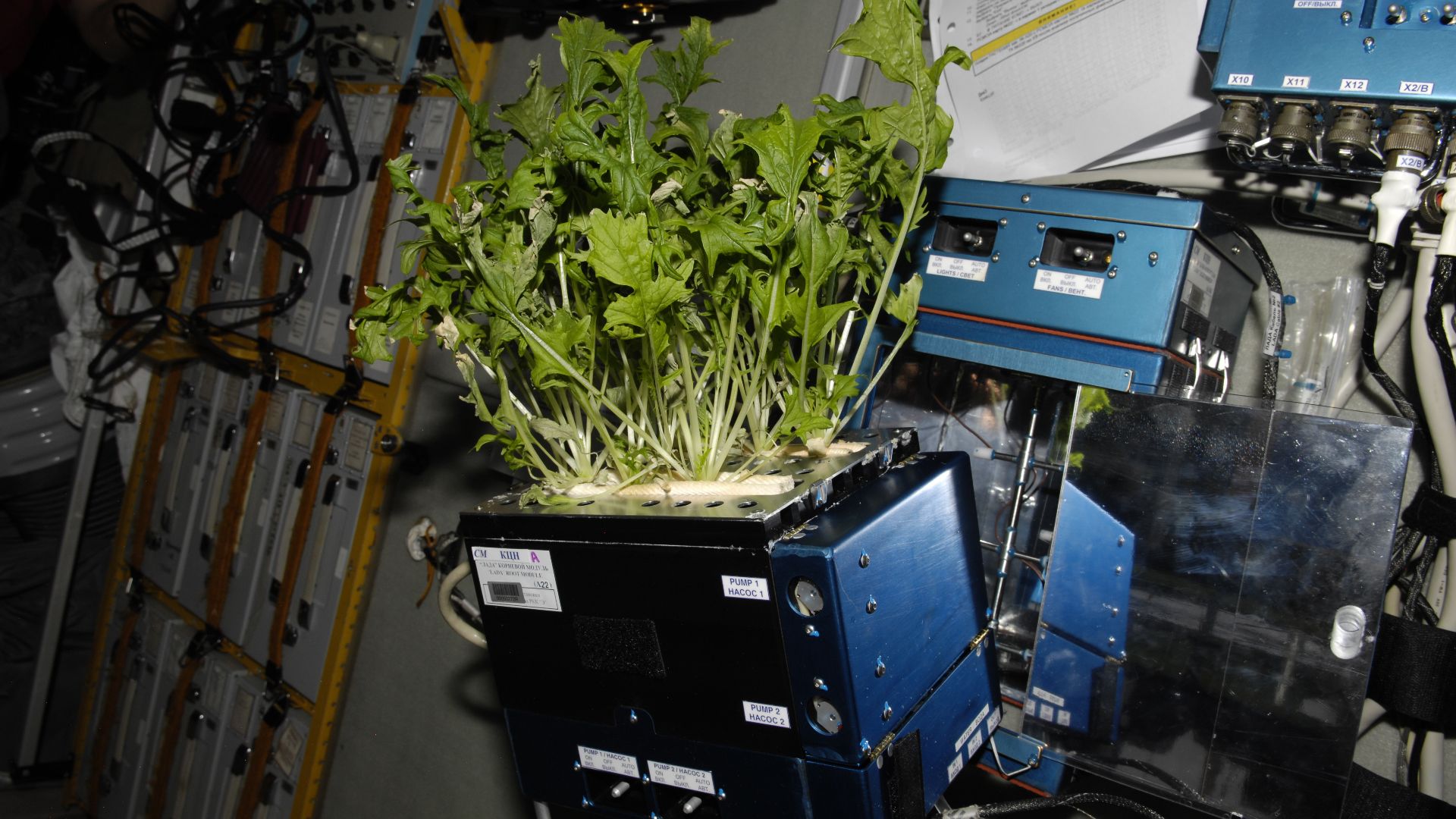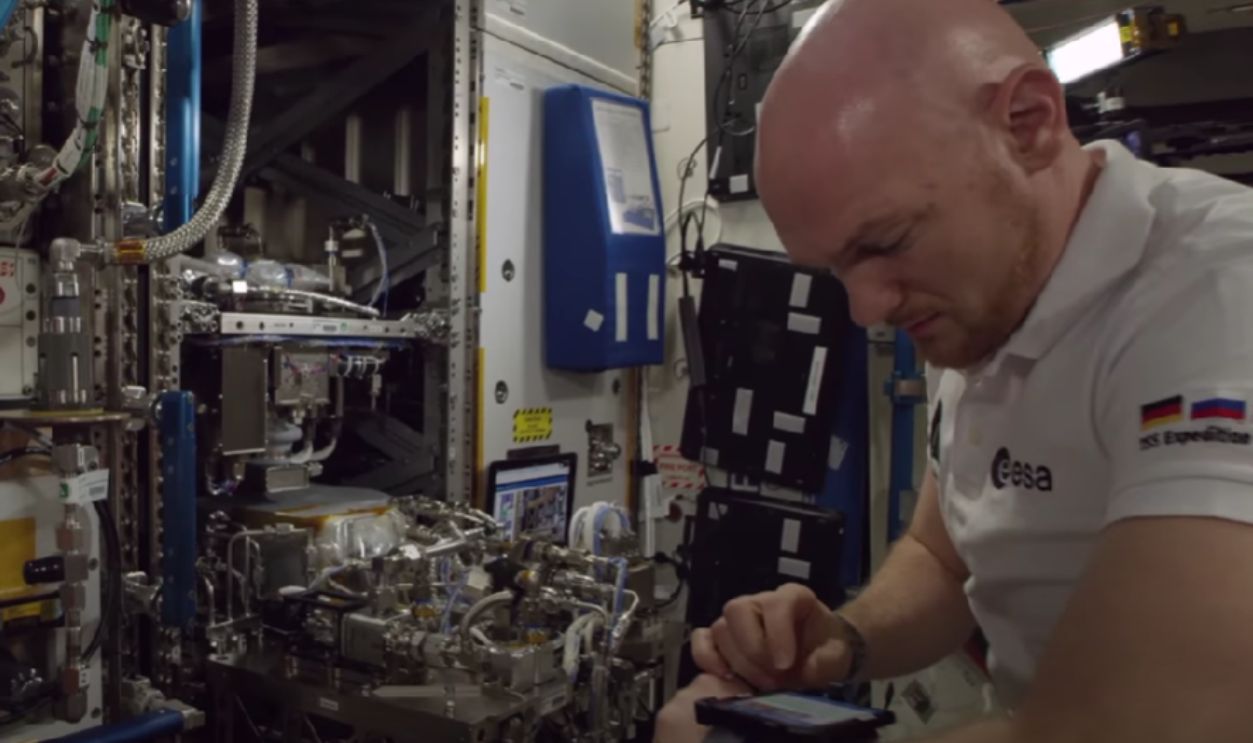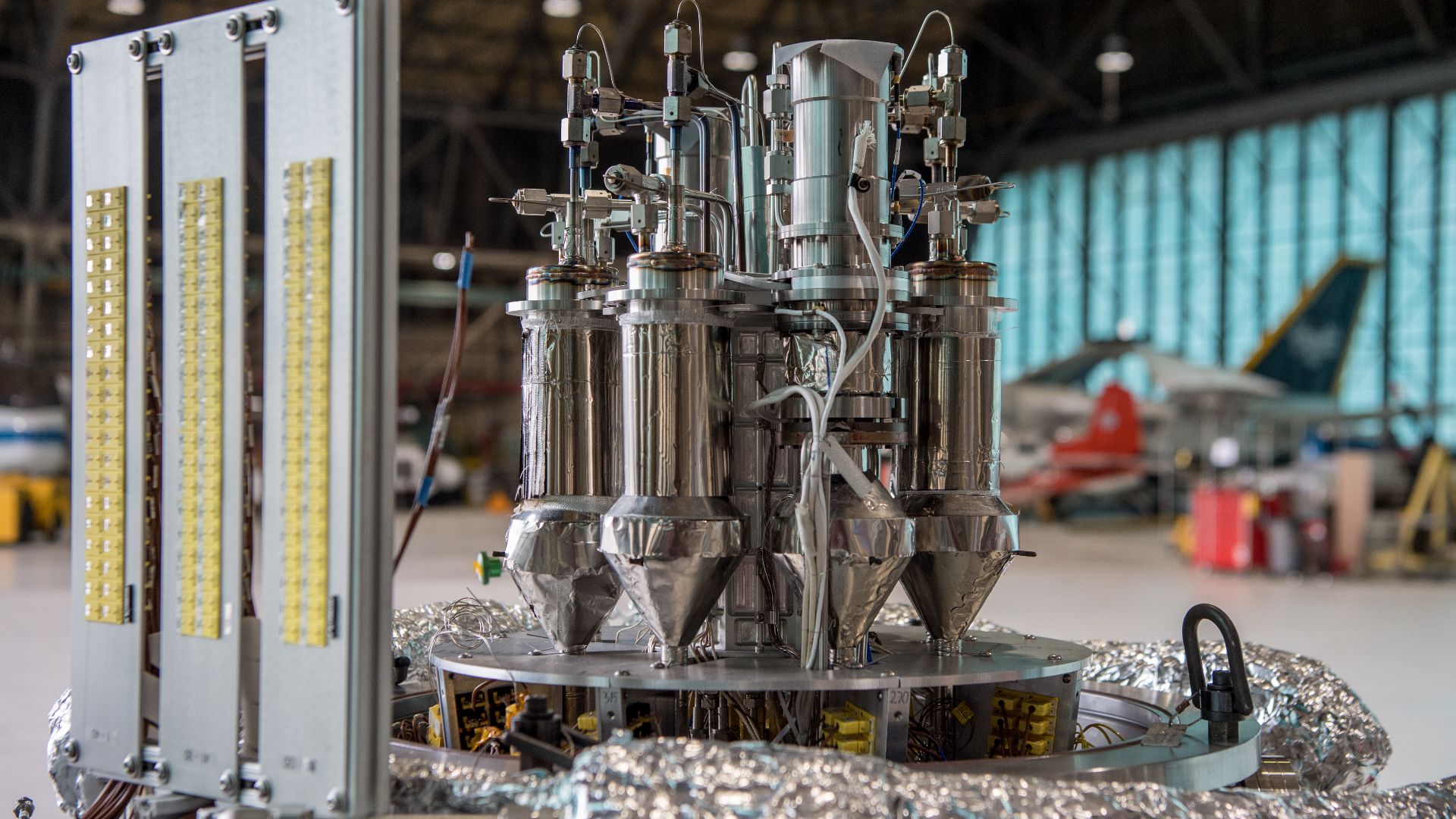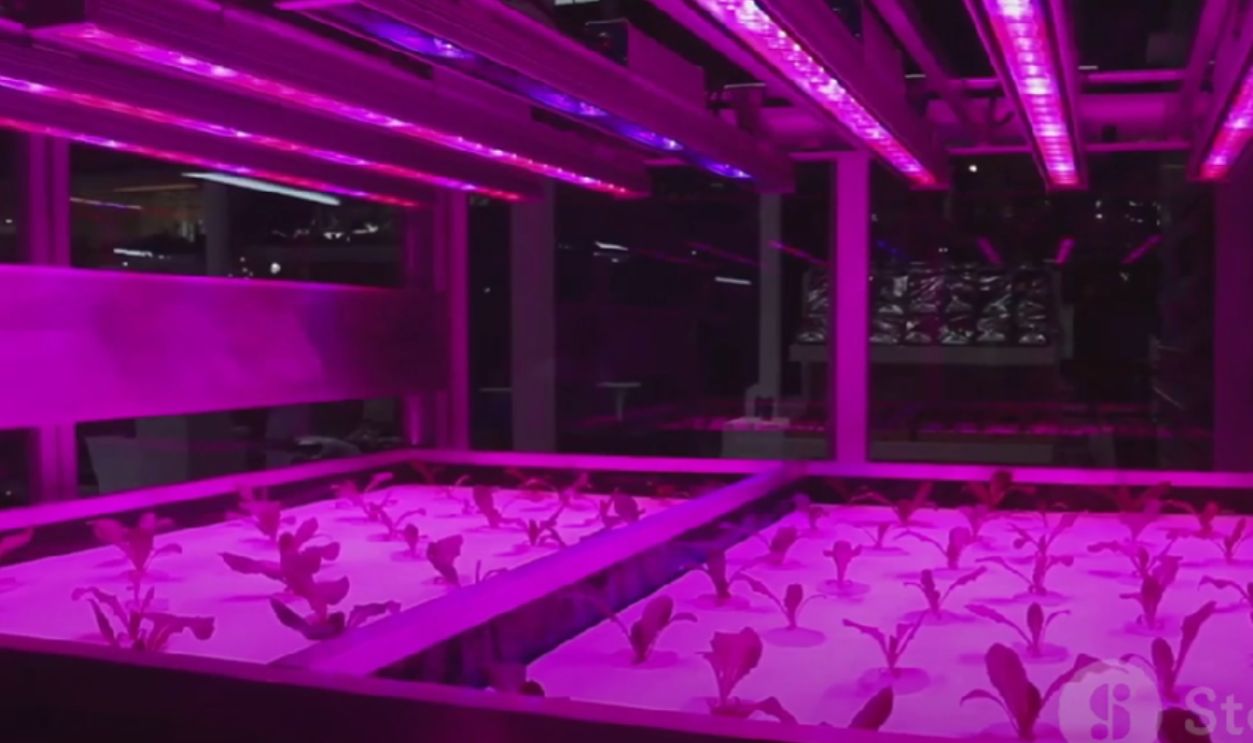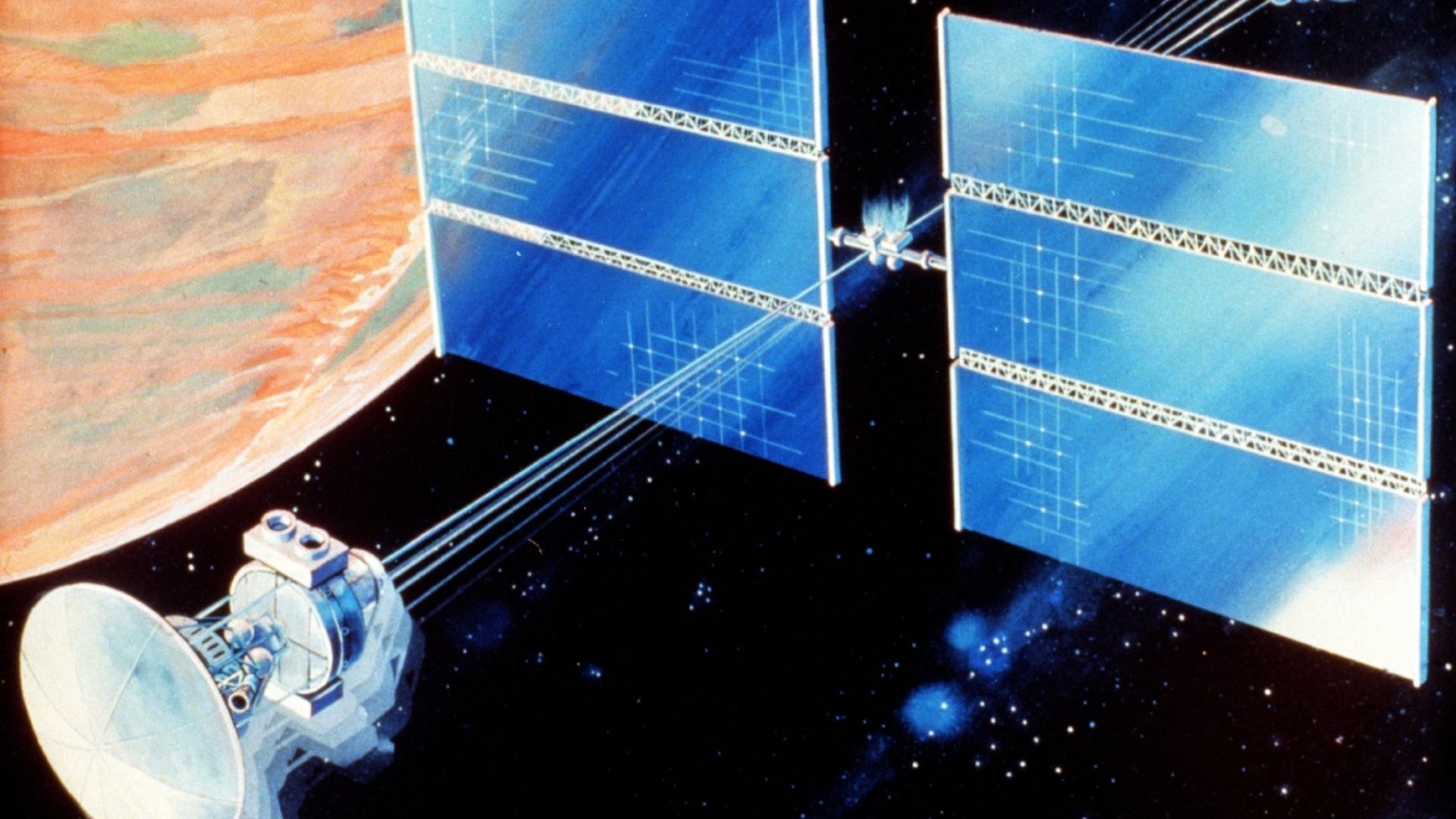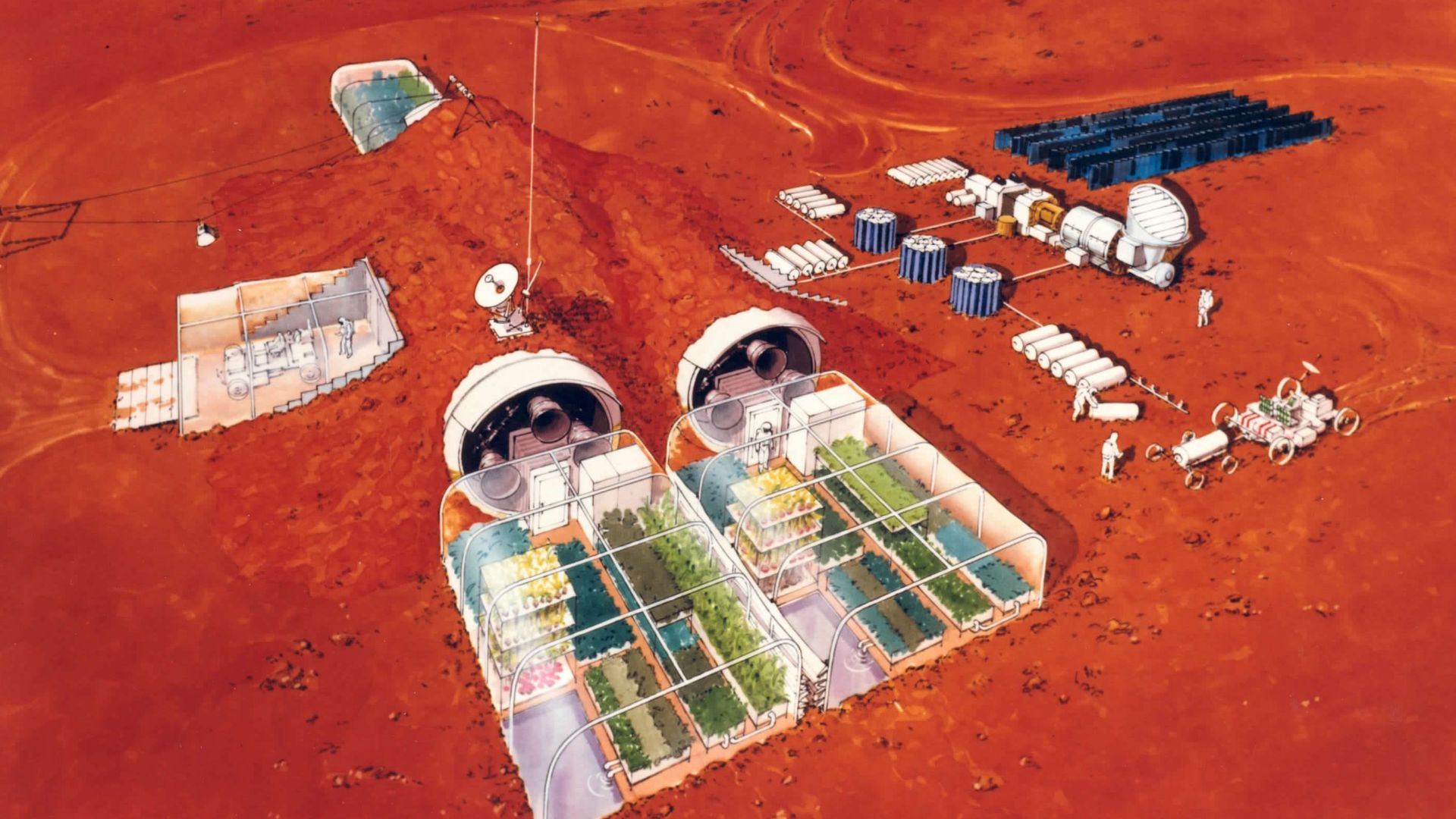Not A Dream Anymore
Living on Mars sounds impossible until you see the blueprints. Real projects are already testing what it takes to survive there. And what we build will decide who survives.

Mars Has No Safety Net
There is no margin for error on Mars. A ruptured wall means instant decompression, and there's no magnetic field to deflect solar radiation. Nor is there a thick atmosphere to regulate heat. Each structure must become its ecosystem or risk becoming a tomb.
The Atmosphere That Chokes
Martian air is 95% carbon dioxide and virtually devoid of oxygen, which makes it unbreathable and barely able to carry sound. Habitats must be sealed and equipped with oxygen systems to sustain life, as humans would survive only minutes in Mars' atmosphere without them due to rapid hypoxia.
 Midjourney AI, Wikimedia Commons
Midjourney AI, Wikimedia Commons
Temperatures That Can Snap Steel
Mars's temperatures can swing over 170 degrees Fahrenheit in a day. It might feel like a summer afternoon and then drop to an Arctic deep freeze by night. This thermal whip effect violently stresses materials, so only highly elastic or insulated structures can survive the daily assault.
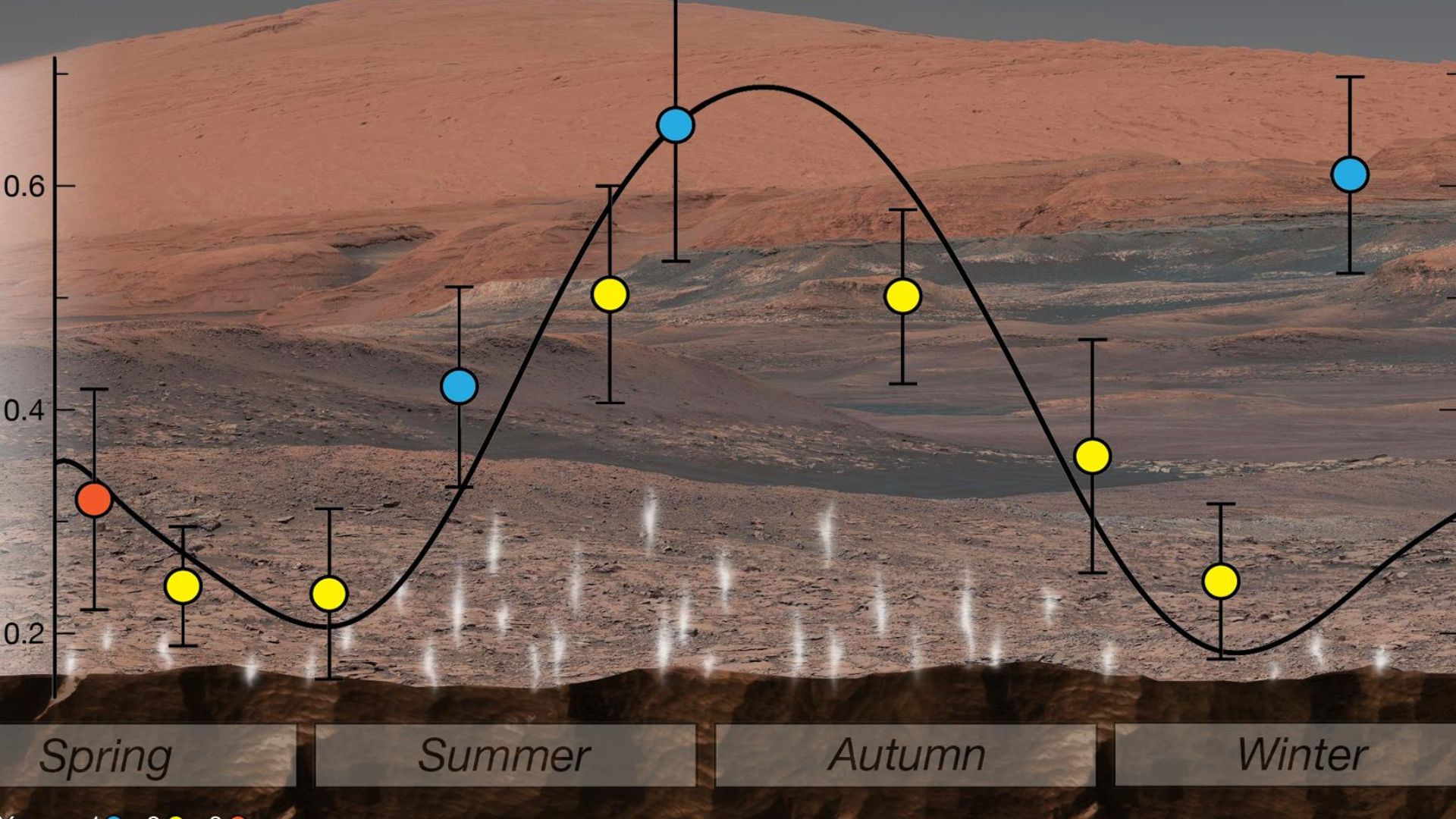 NASA/JPL-Caltech, Wikimedia Commons
NASA/JPL-Caltech, Wikimedia Commons
Gravity That Unbuilds The Human Body
As if the extreme temperatures weren't enough, Mars presents a challenge with just 38% of Earth's gravity. This low gravity weakens bones and changes how buildings distribute stress. Foundations must adapt to lighter loads while staying stable on shifting Martian terrain.
Dust That Damages Everything
Martian dust is electrically charged and finer than talcum powder. It clings to surfaces and corrodes electronics. Worse, it can short-circuit systems or clog ventilation filters. So, habitats must completely seal out this dust or be engineered to survive in its relentless, abrasive presence.
 European Space Agency, Wikimedia Commons
European Space Agency, Wikimedia Commons
3D Printing With Martian Regolith
Scientists plan to use Martian soil—regolith—instead of shipping tons of building material. Mixed with binding agents, it can be 3D-printed into strong, layered shelters. These structures are designed to block radiation and be built by robots before humans arrive.
3D Printing With Martian Regolith (Cont.)
NASA’s 3D-Printed Habitat Challenge and ESA trials show that regolith simulants can harden into blocks under heat and pressure. Dome designs reduce exposure and improve durability. With robotic automation, shelters can be constructed before human arrival to cut risk and enable faster setup in hostile environments.
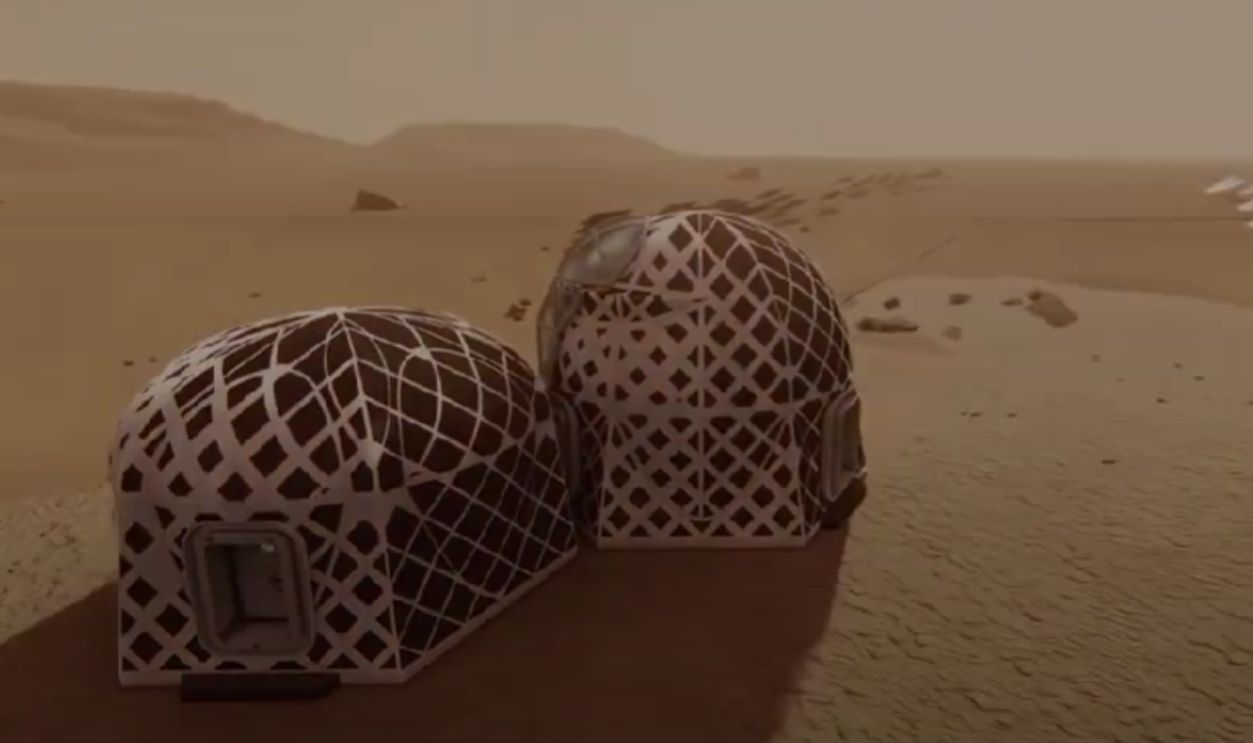 NASA’s 3D Printed Habitat Challenge: Phase 3 Level 4 Final Results by TopTechTopic
NASA’s 3D Printed Habitat Challenge: Phase 3 Level 4 Final Results by TopTechTopic
Ice Domes With Built-In Radiation Shields
In colder Martian regions, ice stores life-sustaining water and becomes a building material. Frozen into domes, it blocks radiation while letting light in. This transparency offers psychological benefits, and locating shelters near polar ice caps ensures lasting access to vital water reserves.
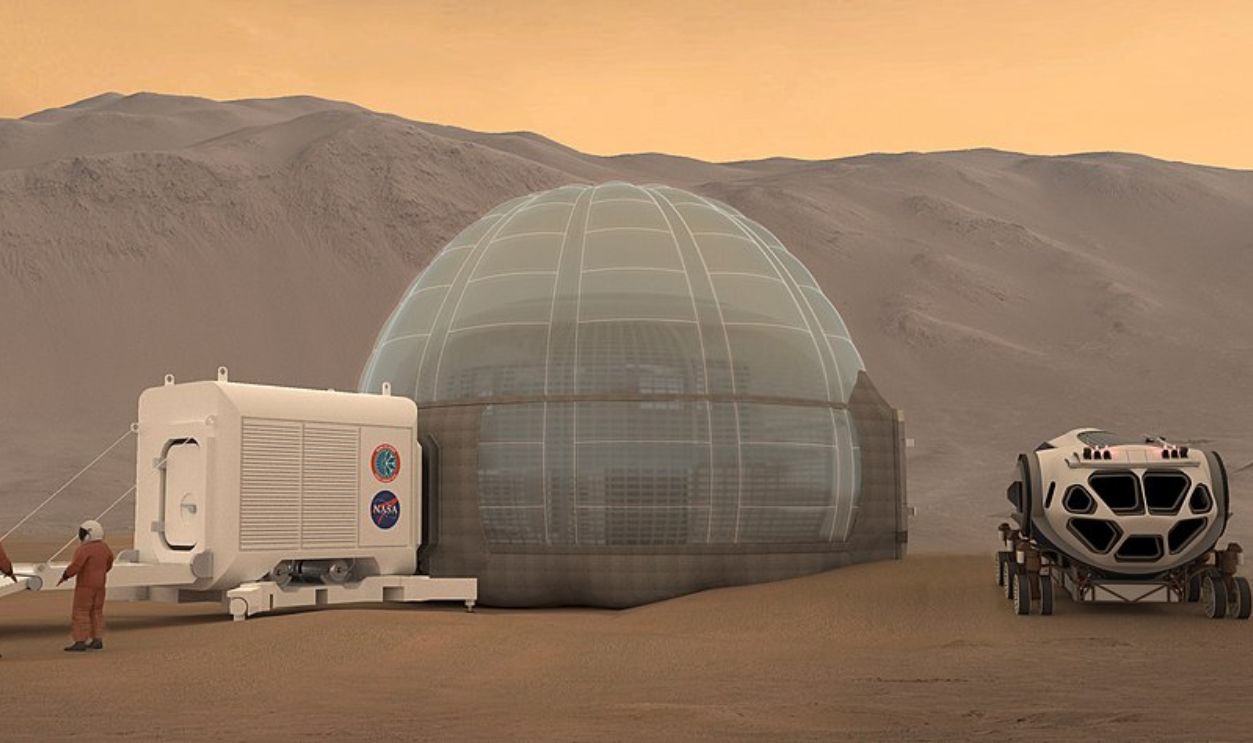 NASA/Clouds AO/SEArch, Wikimedia Commons
NASA/Clouds AO/SEArch, Wikimedia Commons
Inflatable Habitats Anchored By Soil
Some designs use inflatable modules sent from Earth. Once landed, they expand into living spaces and are quickly buried in Martian soil. This regolith provides essential insulation and protection from radiation. These structures are lightweight and practical for the mission's early phases.
MARSHA And Vertical Living
Designed by AI SpaceFactory, MARSHA is a tall, vertical habitat made for Mars. Its height reduces dust exposure, and its gradient wall thickness balances internal pressure. The interior is divided into levels that improve space use and offer privacy, something astronauts will need on long-term missions.
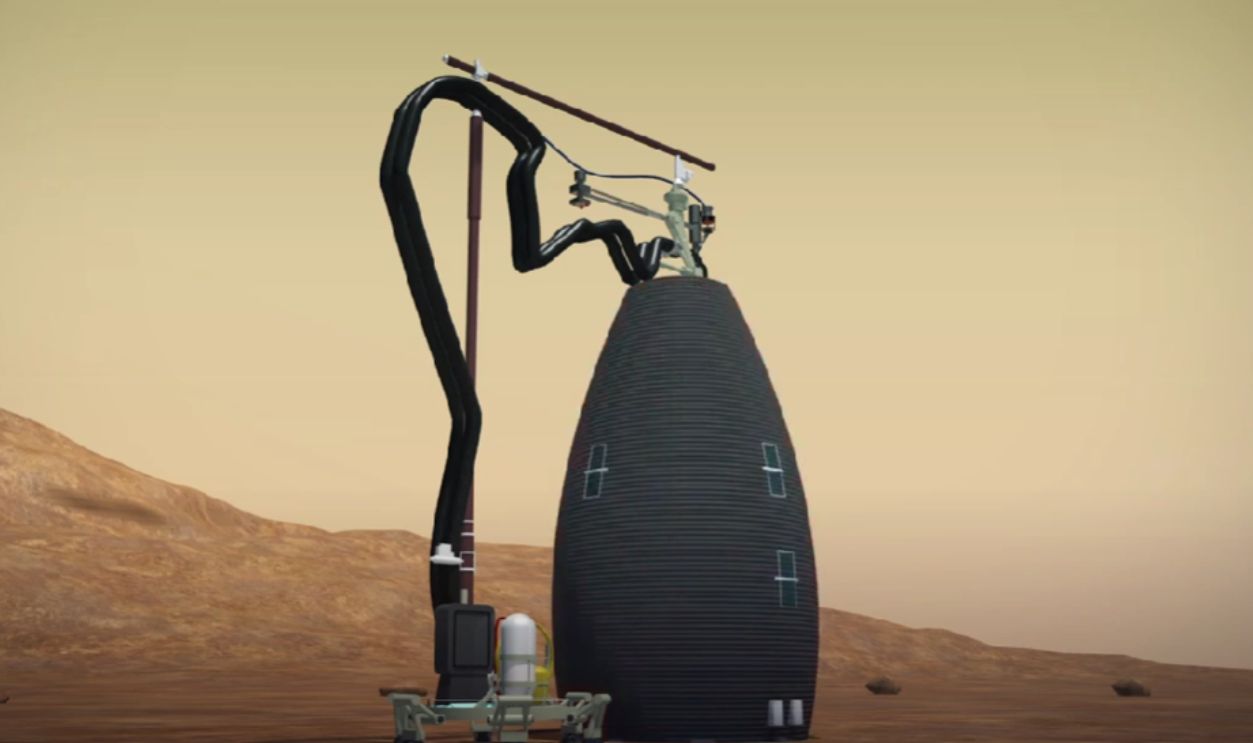 AI SpaceFactory wins NASA's Mars Habitat competition by News Direct
AI SpaceFactory wins NASA's Mars Habitat competition by News Direct
MARSHA And Vertical Living (Cont.)
The structure uses basalt fiber from Martian rock to form strong, recyclable outer layers. Its multi-level design separates work and recreation zones to reduce cognitive fatigue. Integrated plant walls and light shafts aim to regulate circadian rhythms and provide psychological comfort and supplemental nutrition.
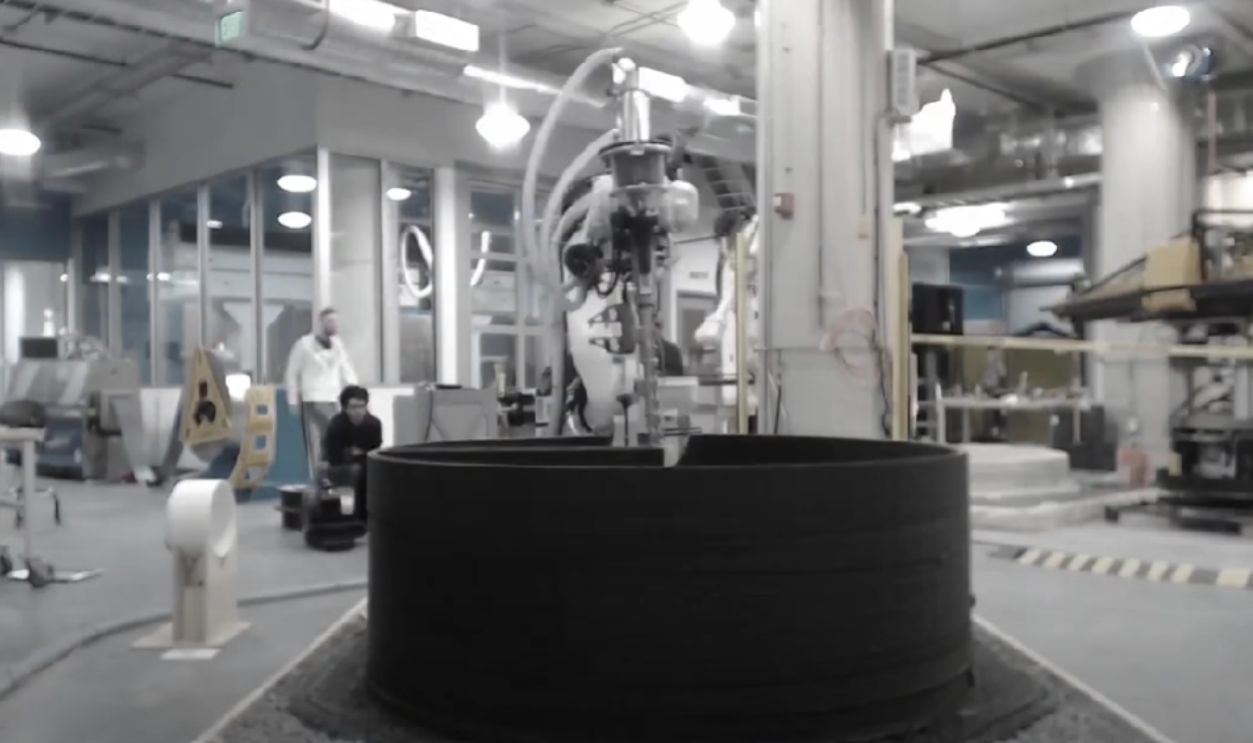 MARSHA - Our Vertical Martian Future (Part Two) by SpaceFactory
MARSHA - Our Vertical Martian Future (Part Two) by SpaceFactory
Lava Tubes As Natural Fortresses
Martian lava tubes formed from rapidly flowing basaltic lava during ancient volcanic events. As the outer layer cooled, it left hollow tunnels beneath the surface. These natural voids, insulated by thick crusts, offer strong protection against radiation and the planet's extreme surface conditions.
 NASA / Jet Propulsion Laboratory / University of Arizona, Wikimedia Commons
NASA / Jet Propulsion Laboratory / University of Arizona, Wikimedia Commons
Lava Tubes As Natural Fortresses (Cont.)
Detected by orbiters and confirmed through skylights and sinuous rilles, these tunnels may extend for miles. Their stable temperatures and thick overhead rock make them prime sites for future habitats. They may even trap volatiles like water ice to offer insights into Mars' past climate and potential signs of life.
Modular Pods Built On Earth
Engineered for efficiency, modular pods are designed to be compact during transport and easily assembled on Mars. These flat-packed units expand into livable spaces to reduce launch mass. Their adaptability allows mission planners to scale structures as needed, which is ideal for long-term missions.
 Six Scientists Lived in a Tiny Pod for a Year Pretending They Were on Mars | WIRED by WIRED
Six Scientists Lived in a Tiny Pod for a Year Pretending They Were on Mars | WIRED by WIRED
Modular Pods Built On Earth (Cont.)
These pods are built tough but light, thanks to carbon composites and alloys. Plus, some come with power and life support already inside. To make sure they’re Mars-ready, scientists run tests at places like HI-SEAS in Hawaii, where the terrain helps them fine-tune every detail.
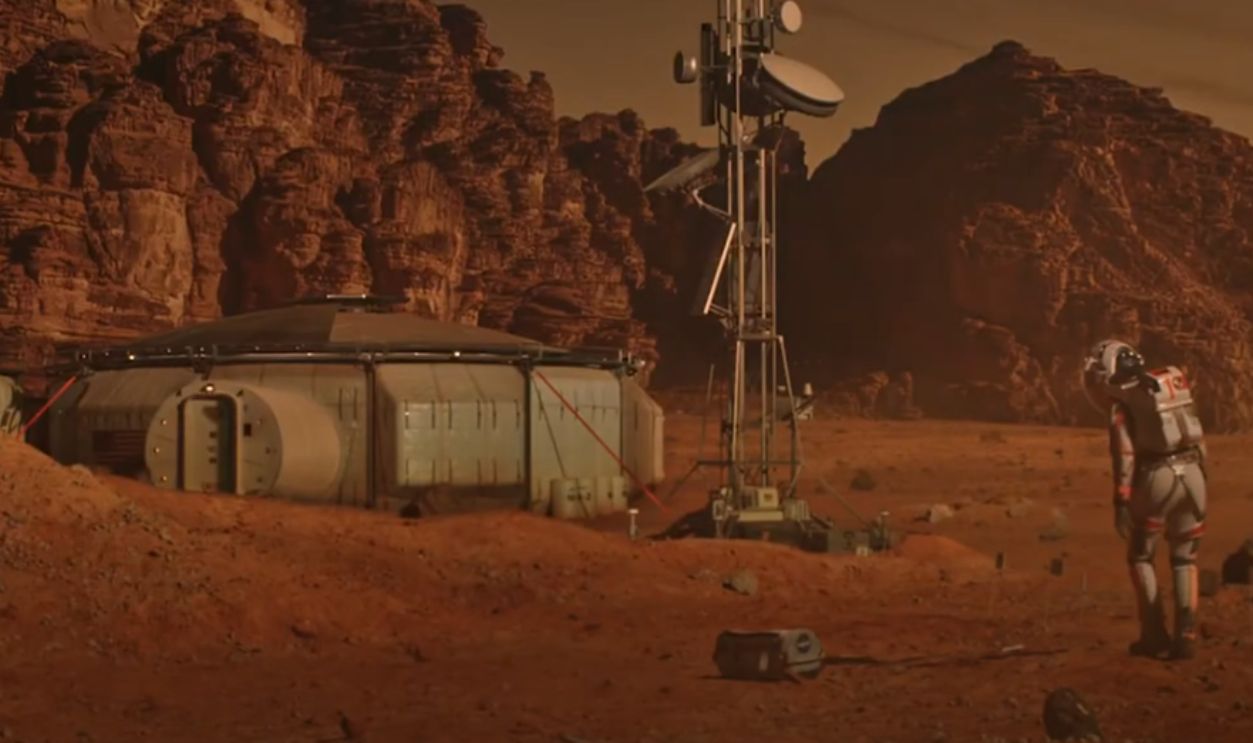 You could spend a year living in this 3D-printed Mars habitat by CNET
You could spend a year living in this 3D-printed Mars habitat by CNET
Robots Will Be The First Martian Builders
Autonomous robots will pave the way before any astronaut sets foot on Mars. Swarm robotics and AI-controlled drones will handle excavation and habitat assembly. This will reduce human risk and ensure shelters are secure and ready for habitation by the time crews arrive.
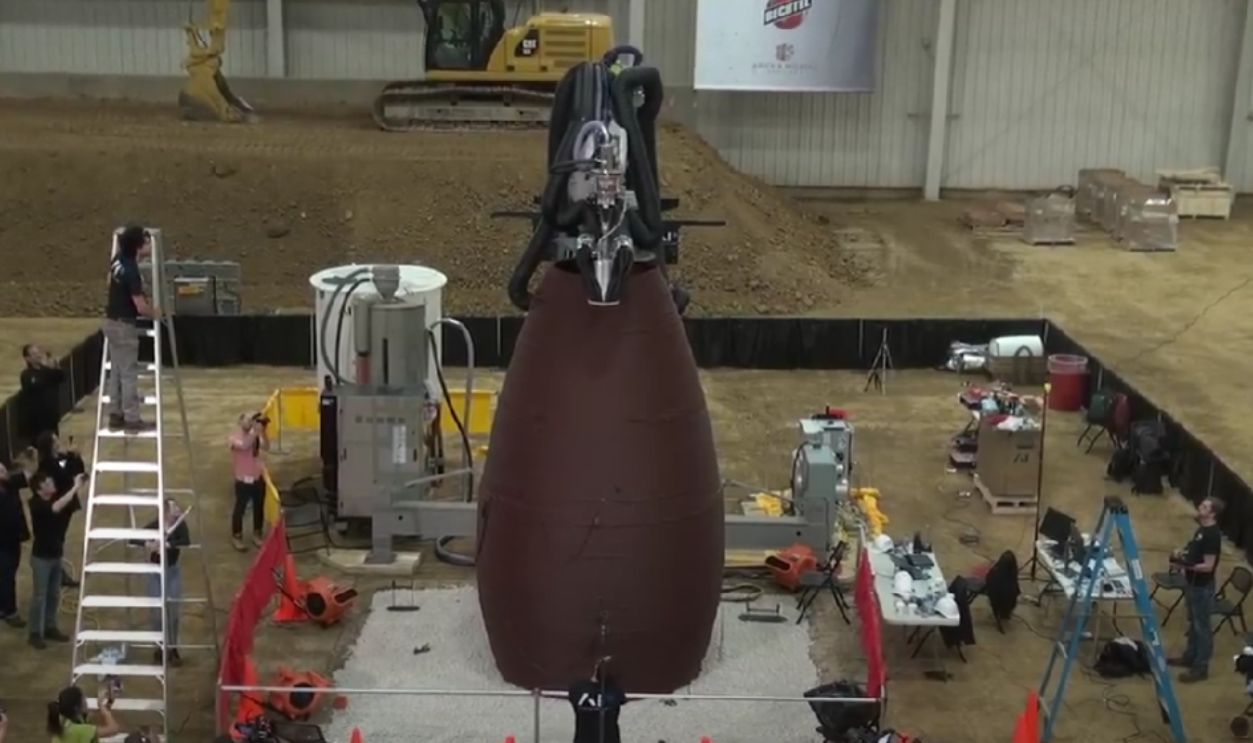 MARSHA 3D Print (NASA Centennial Challenge Victory Highlight Reel) by SpaceFactory
MARSHA 3D Print (NASA Centennial Challenge Victory Highlight Reel) by SpaceFactory
Robots Will Be The First Martian Builders (Cont.)
NASA’s RASSOR and ESA’s PRO-ACT prototypes demonstrate how excavation and structural tasks could be automated. Robots may also deploy solar panels and scout for hazards. Since communication delays prevent real-time control, these machines must be capable of adapting to unpredictable terrain.
Turning Carbon Dioxide Into Oxygen
Martian air is 95% carbon dioxide. NASA's MOXIE experiment aboard the Perseverance rover has successfully converted that into breathable oxygen using solid oxide electrolysis. Scaling this technology will be critical for human survival to reduce dependency on Earth and enable long-term missions with on-site oxygen production.
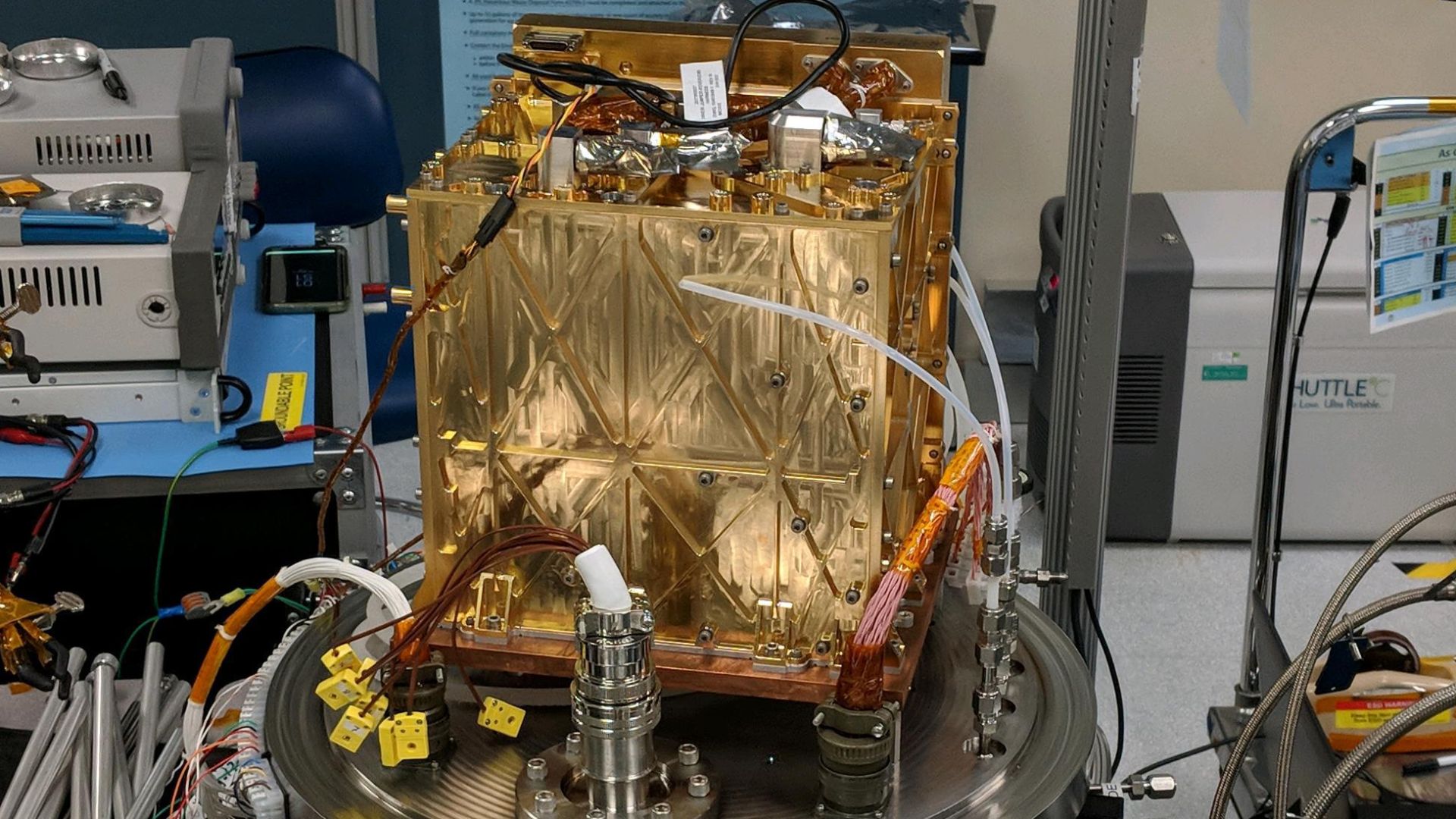 NASA/JPL-Caltech, Wikimedia Commons
NASA/JPL-Caltech, Wikimedia Commons
Melting Ice For Drinking Water
Subsurface ice deposits are Mars' most promising water source. Specialized heaters and drills can extract this frozen resource, which is then purified for drinking. Recent radar data also suggests that accessible ice is present near the surface in many regions for sustainable habitation.
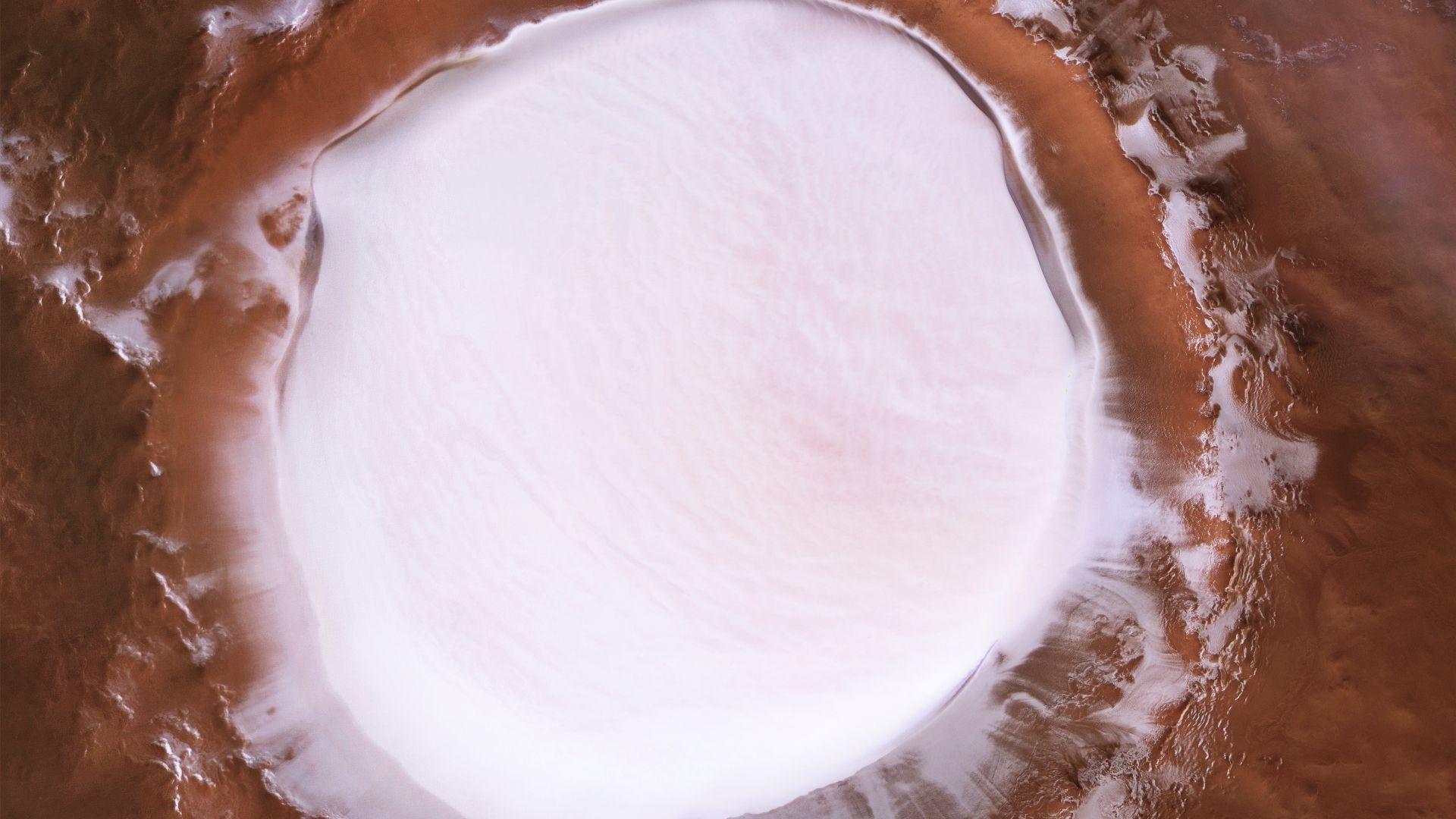 ESA/DLR/FU Berlin, Wikimedia Commons
ESA/DLR/FU Berlin, Wikimedia Commons
Melting Ice For Drinking Water (Cont.)
NASA's Subsurface Water Ice Mapping project, led by researchers like Ali Bramson, uses radar and spectrography to identify hidden ice layers. Mid-latitudes in Mars' northern hemisphere show widespread subsurface ice. Ground-based radar systems are being tested on Earth to simulate Martian drilling for future missions.
 Purdue Expert: Space missions to look forward to in 2024 by Purdue University News
Purdue Expert: Space missions to look forward to in 2024 by Purdue University News
Recycling Everything In A Closed Loop
On Mars, waste equals opportunity. Life support systems must recycle air and organic waste to sustain long-term crews. Proven ISS technologies, like urine-to-water converters and CO₂ scrubbers, will form the backbone of Martian ecosystems by ensuring that every element is reused efficiently.
Composting Human Waste For Power And Fertilizer
Martian missions simply can't afford to discard waste. Organic human waste can be processed in bioreactors to generate methane gas, which fuels generators. The remaining byproduct becomes a nutrient-rich fertilizer that closes the loop between hygiene and food production in a compact, efficient system.
Hydroponic Farming In Climate-Controlled Bays
Martian soil contains toxic perchlorates, so food must be grown without them. Hydroponics offers a solution: nutrient-enriched water supports plant roots inside enclosed grow bays. These systems recycle water, maintain ideal temperature and humidity, and use LED lighting tailored to maximize photosynthesis without relying on sunlight.
Which Crops Can Survive The Trip And Thrive?
NASA studies show crops like potatoes, kale, soybeans, and peanuts are ideal for Mars. They're compact and resilient under artificial light. Breeding efforts aim to enhance yield and nutrient value. Each candidate is chosen based on growth rate and minimal waste.
Smart Monitoring For Everything That Breaths Or Blinks
Integrated AI systems will track oxygen levels, CO₂ buildup, water recycling rates, and plant health. Biosensors embedded in suits and habitat surfaces offer real-time updates. These systems alert crews early before faults or failures cascade into life-threatening emergencies.
Solar Panels Vs. The Martian Dust
Solar energy is plentiful but unreliable on Mars. Frequent dust storms and weak sunlight limit performance. Engineers design tilting, self-cleaning solar arrays paired with efficient batteries to compensate. Some setups include mirrors to amplify light or backup nuclear generators for critical power during long storms.
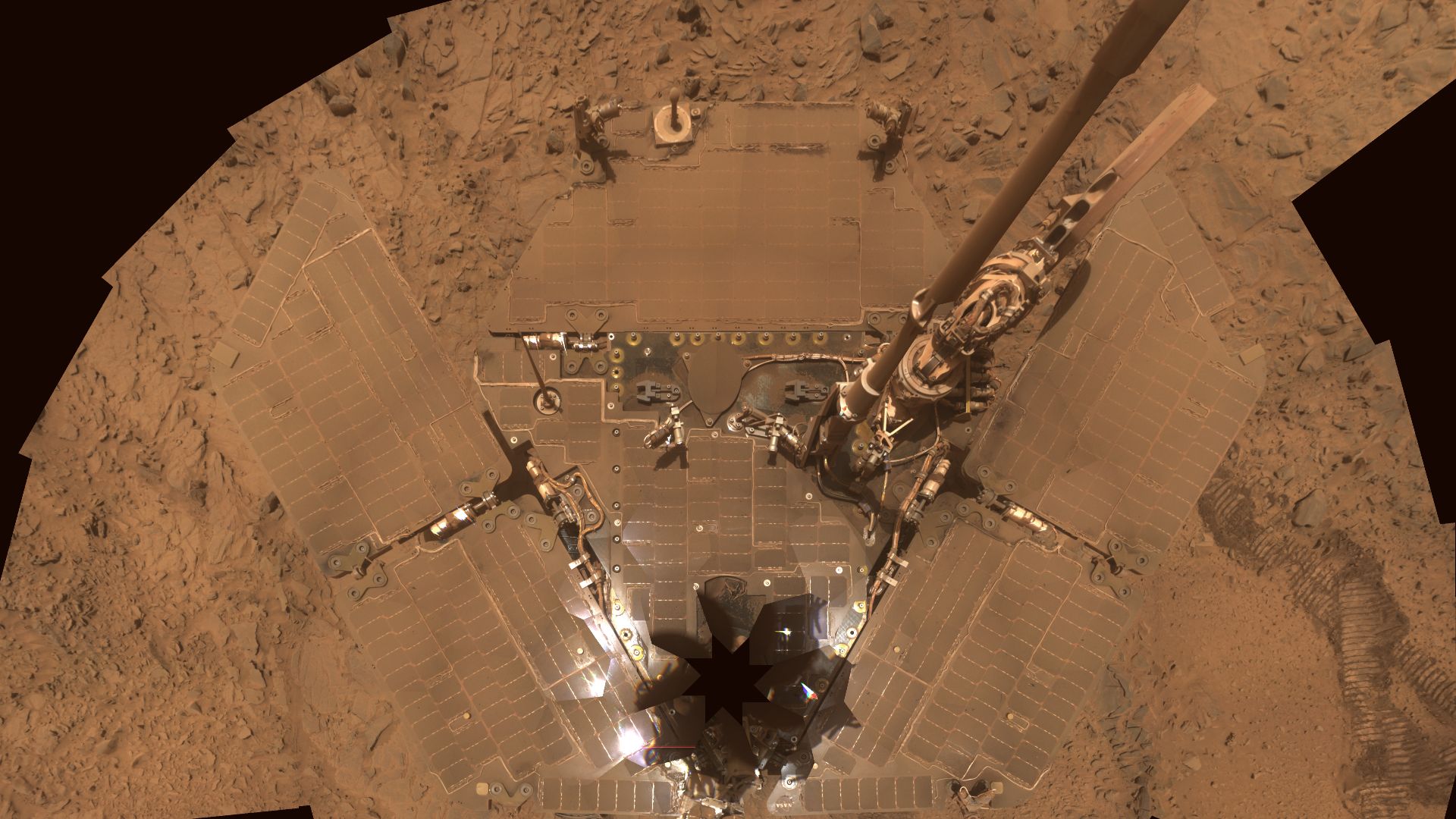 NASA/JPL-Caltech/Cornell, Wikimedia Commons
NASA/JPL-Caltech/Cornell, Wikimedia Commons
Small Nuclear Reactors In Every Base
NASA's Kilopower project is developing compact nuclear fission reactors that provide up to 10 kilowatts of steady power, enough for a small Martian outpost. These reactors are shielded and scalable to ensure constant energy even during dust storms or long nights when solar fails.
Batteries Built For A Different Planet
Mars requires batteries that function in cold, low-pressure environments. Lithium-ion variants with thermal regulation and deep-discharge capabilities are top candidates. These units will store solar or nuclear power and deliver it reliably for everything from life support to heating and communication to farming.
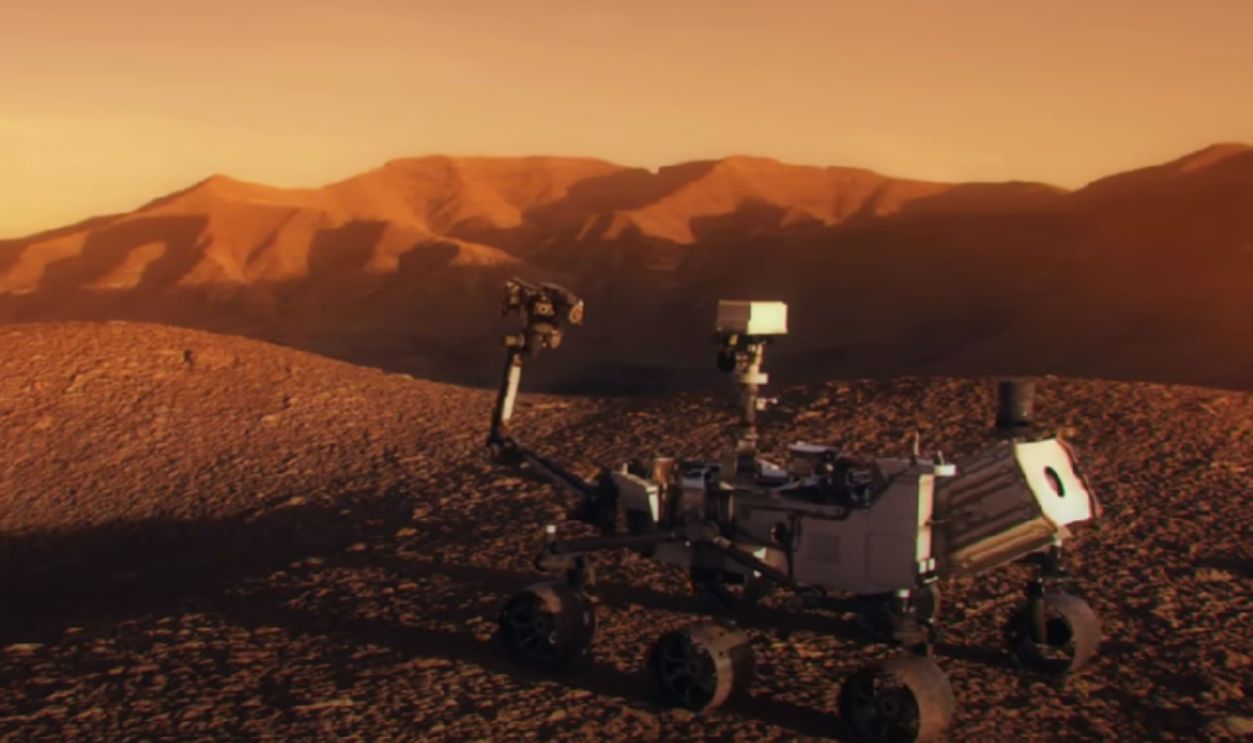 Mars Battery Innovation: No Fuel, No Problem—Just Use CO2! by SpaceEyeNews
Mars Battery Innovation: No Fuel, No Problem—Just Use CO2! by SpaceEyeNews
Creating A Local Power Grid On Mars
Rather than powering each shelter independently, engineers are exploring microgrids. These decentralized systems link nuclear reactors and battery storage across habitats. Smart controllers distribute energy where needed most by balancing loads and enhancing resilience across an expanding Martian settlement.
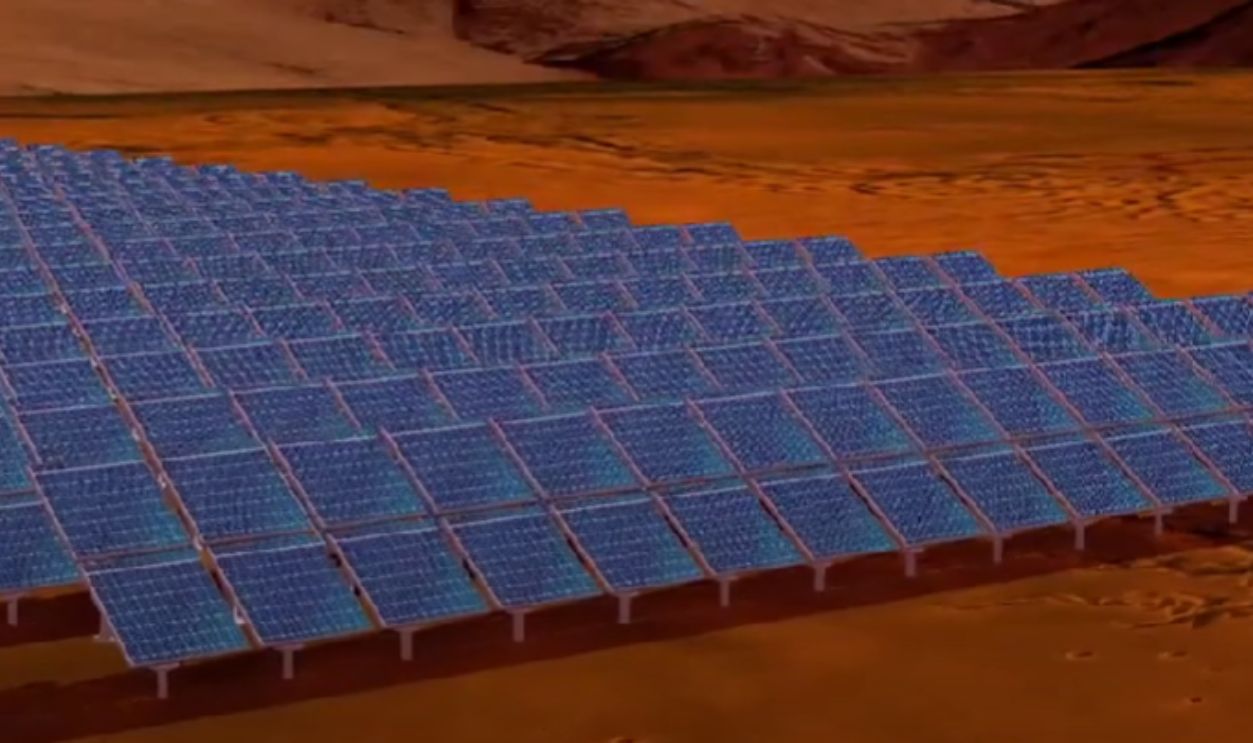 Microgrid on Mars by Siemens Knowledge Hub
Microgrid on Mars by Siemens Knowledge Hub
Designing For Psychological Resilience
Mars habitats must protect mental health. Designers are experimenting with soothing color palettes and varied lighting to reduce stress. Interior layouts will promote movement and personal space to combat monotony and the psychological effects of long-term isolation.
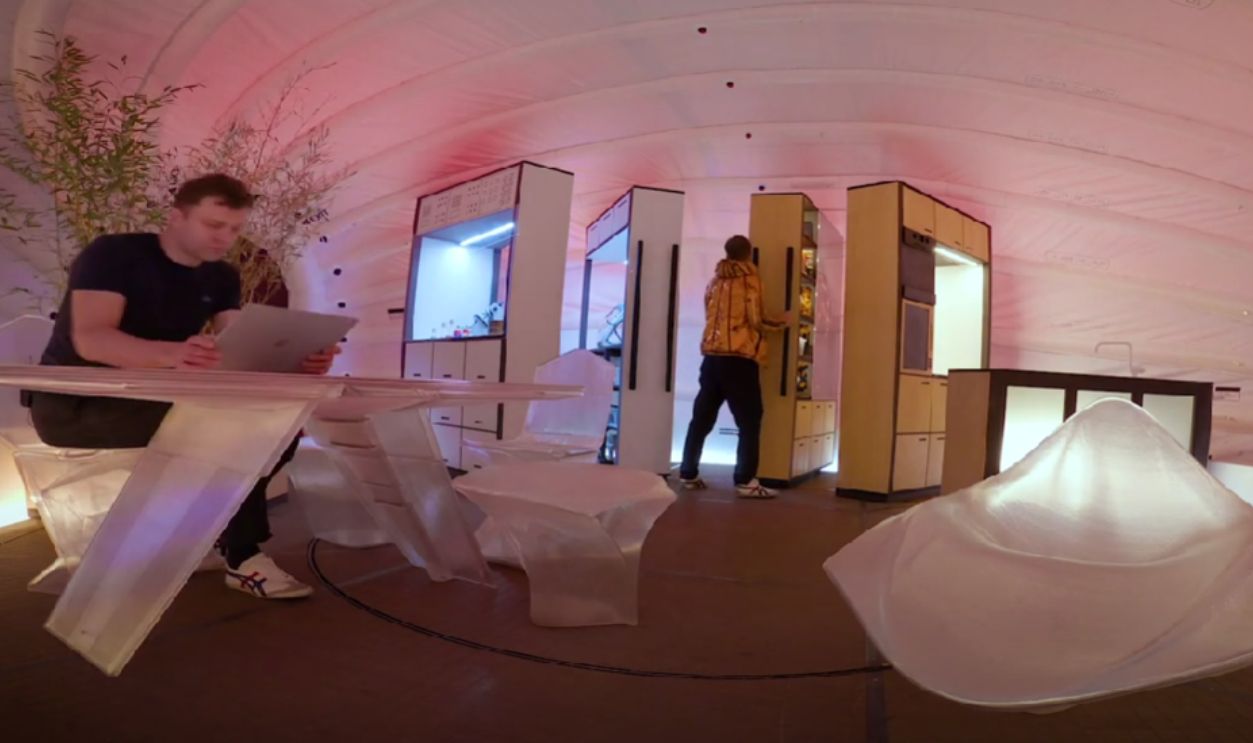 Interior design for the first Martians by RAZOR Science Show
Interior design for the first Martians by RAZOR Science Show
Regulating Sleep And Body Clocks Without A Sun
Without natural day-night cues, astronauts risk sleep disorders and cognitive decline. Circadian lighting systems mimic Earth's sunlight cycles using tunable LEDs that shift in color and intensity throughout the day. These systems aim to help regulate sleep and boost alertness during emergencies.
 National Institute of General Medical Sciences, Wikimedia Commons
National Institute of General Medical Sciences, Wikimedia Commons
Ensuring Privacy In Confined Spaces
Even in shared habitats, personal space matters. Crews will rely on collapsible dividers and light-dimming controls to create private zones. Modular layout designs support flexible room functions, which allow individuals to rest or disconnect. This is essential for preserving group cohesion.
 How astronauts sleep in Space by ISSET Space & STEM
How astronauts sleep in Space by ISSET Space & STEM
Bringing Earth Indoors Feels Like Survival, Not Luxury
Habitats will feature biophilic elements like indoor plants, Earth landscapes on digital panels, and nature-based soundscapes to ease the psychological strain. Studies show these elements reduce stress and improve focus, vital benefits when the outside world is hostile and the inside feels mechanical.
On-Base Medical Tech Without A Doctor
Crews must handle medical issues independently. Diagnostic devices and 3D-printed medication will play critical roles. Remote specialists can oversee procedures remotely, though training and autonomy are essential. NASA's analog missions have tested these systems in remote Antarctica and NEEMO.
Isolation Hits Harder When Earth Can't Answer Back
Mars missions involve 4 to 24-minute communication delays. Crews must rely on preloaded guidance and asynchronous support. Prolonged silence and distance from Earth intensify loneliness, so psychological prep and peer support strategies are baked into mission planning from day one.
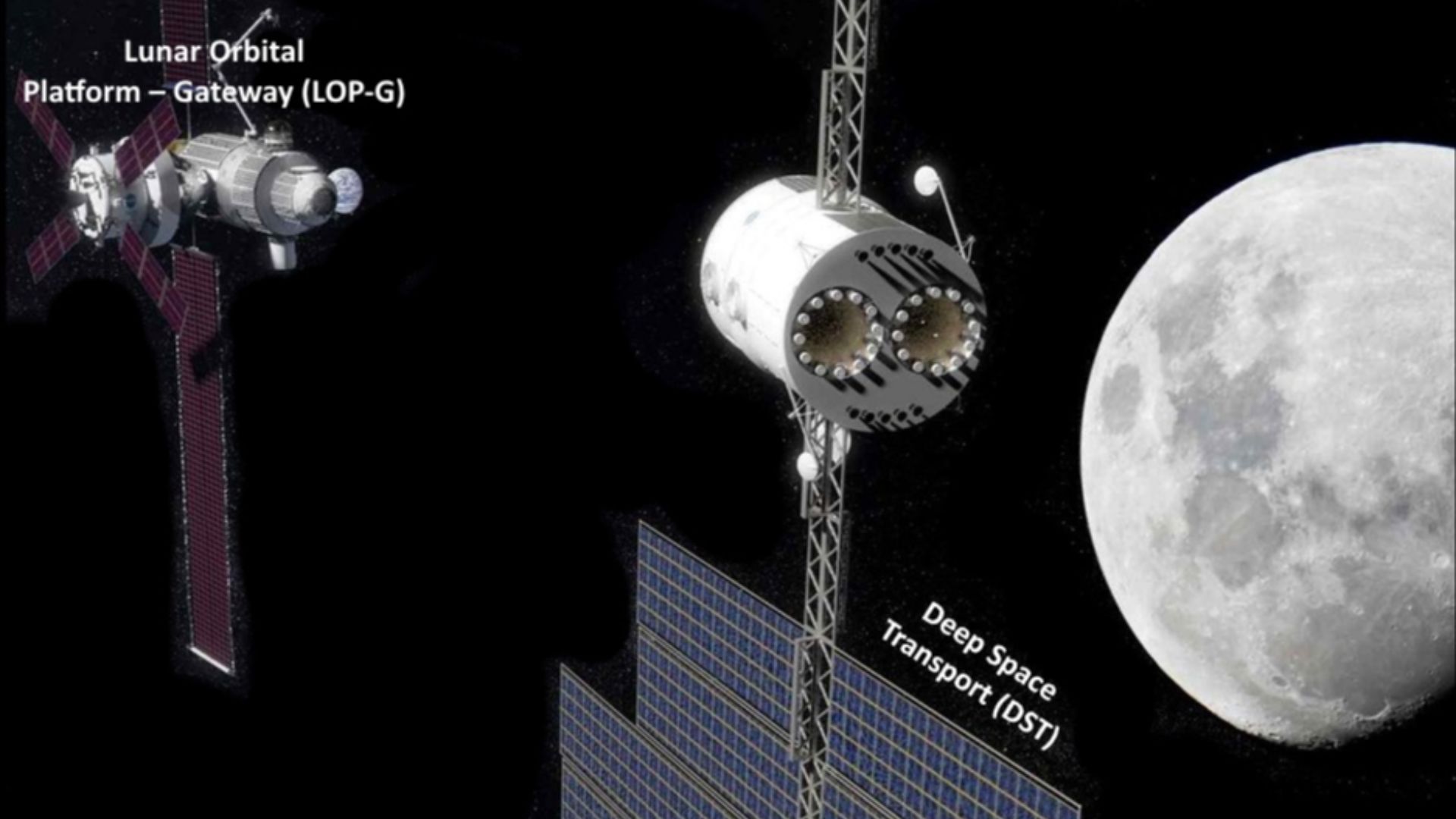 NASA and Soumya-8974, Wikimedia Commons
NASA and Soumya-8974, Wikimedia Commons
Self-Healing Concrete For Mars?
Extreme temperatures make materials expand when it's hot and shrink when it's cold, especially on Mars. Researchers are developing concrete infused with bacteria or polymer capsules that react with air and moisture to seal microcracks. These self-repairing systems reduce maintenance needs in these habitats.
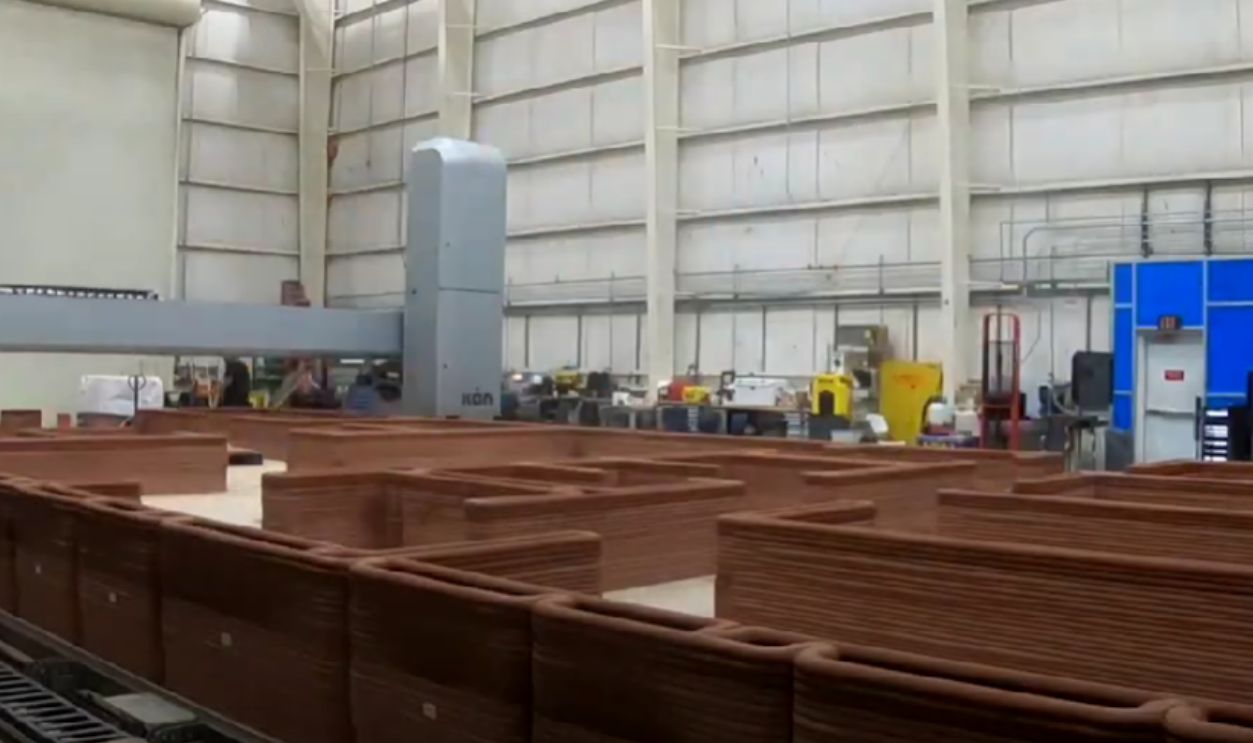 You could spend a year living in this 3D-printed Mars habitat by CNET
You could spend a year living in this 3D-printed Mars habitat by CNET
Self-Healing Concrete For Mars? (Cont.)
One promising approach involves Bacillus bacteria, which produce limestone when exposed to oxygen and moisture, naturally patching cracks. Another uses microencapsulated healing agents that are released when cracks form. These technologies are under active testing by ESA and universities right now.
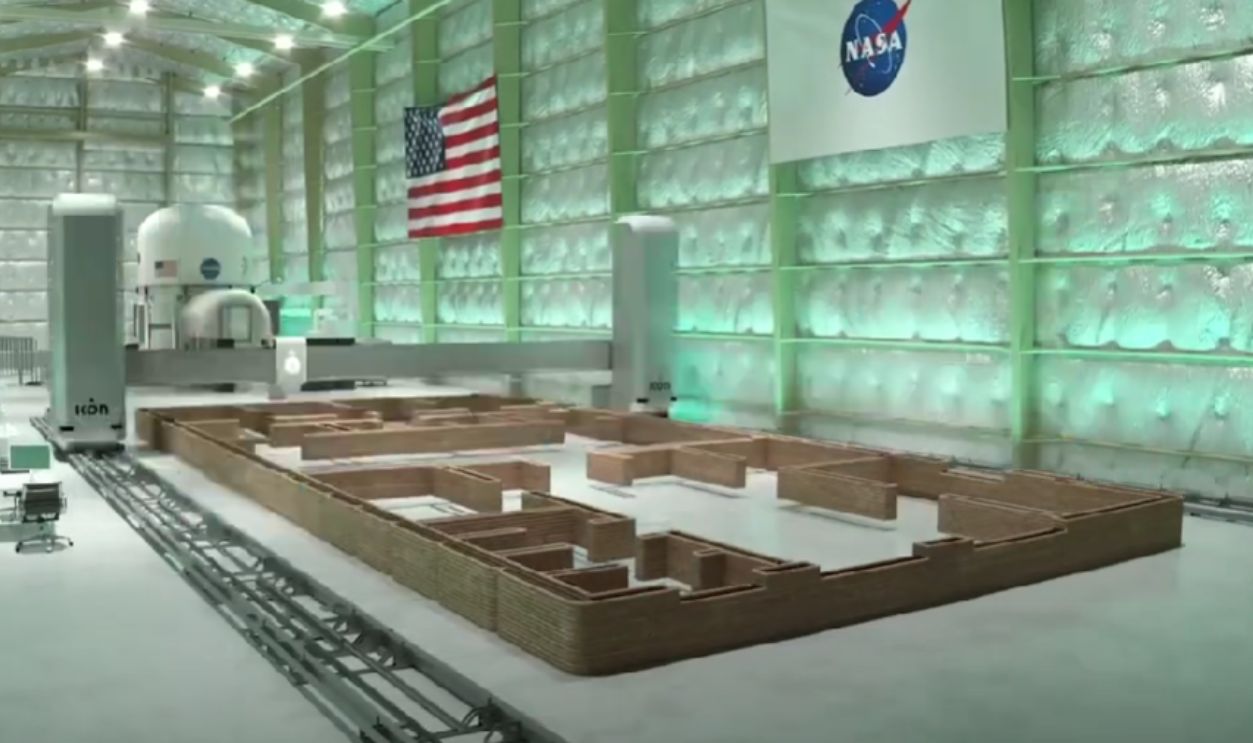 You could spend a year living in this 3D-printed Mars habitat by CNET
You could spend a year living in this 3D-printed Mars habitat by CNET
Programmable Materials That Shift Shape
Engineers are exploring "4D materials" that change form in response to heat or pressure. These smart materials could make Mars habitats that adapt to new environments or automatically seal off damaged areas to create living structures that react like organisms to their surroundings.
 Chris Herakles, Wikimedia Commons
Chris Herakles, Wikimedia Commons
Could We Create Artificial Gravity Indoors?
Prolonged exposure to low gravity causes muscle atrophy and bone loss. One solution is rotating habitats that use centrifugal force to simulate gravity. Another option involves magnetic resistance chambers. Both remain experimental, but early-stage research explores their potential for long-term Martian health.
Can Homes Build Themselves From The Inside Out?
Bio-inspired structures could grow or assemble autonomously using robotic swarms and embedded instructions. Concepts include 3D-printed biopolymers and synthetic "organisms" that construct shelters in stages by offering a path toward an adaptive, scalable Martian architecture that evolves with mission demands.
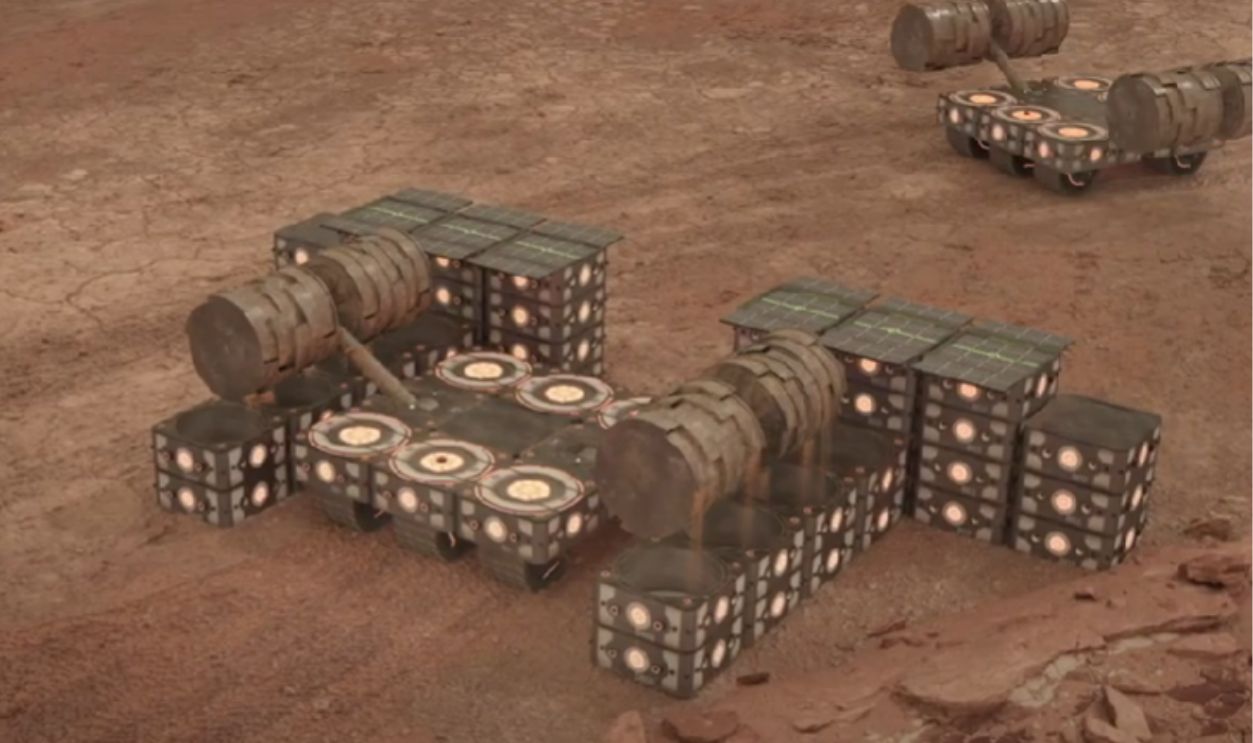 THIS Is How We Build On Mars by The B1M
THIS Is How We Build On Mars by The B1M
Can Homes Build Themselves From The Inside Out? (Cont.)
NASA and DARPA have explored programmable matter and autonomous systems through initiatives like BioMASON and the ELM (Emerging Living Materials) program. These efforts envision Martian shelters that regenerate or expand when needed. Though experimental, this fusion hints at self-sustaining habitats of the future.
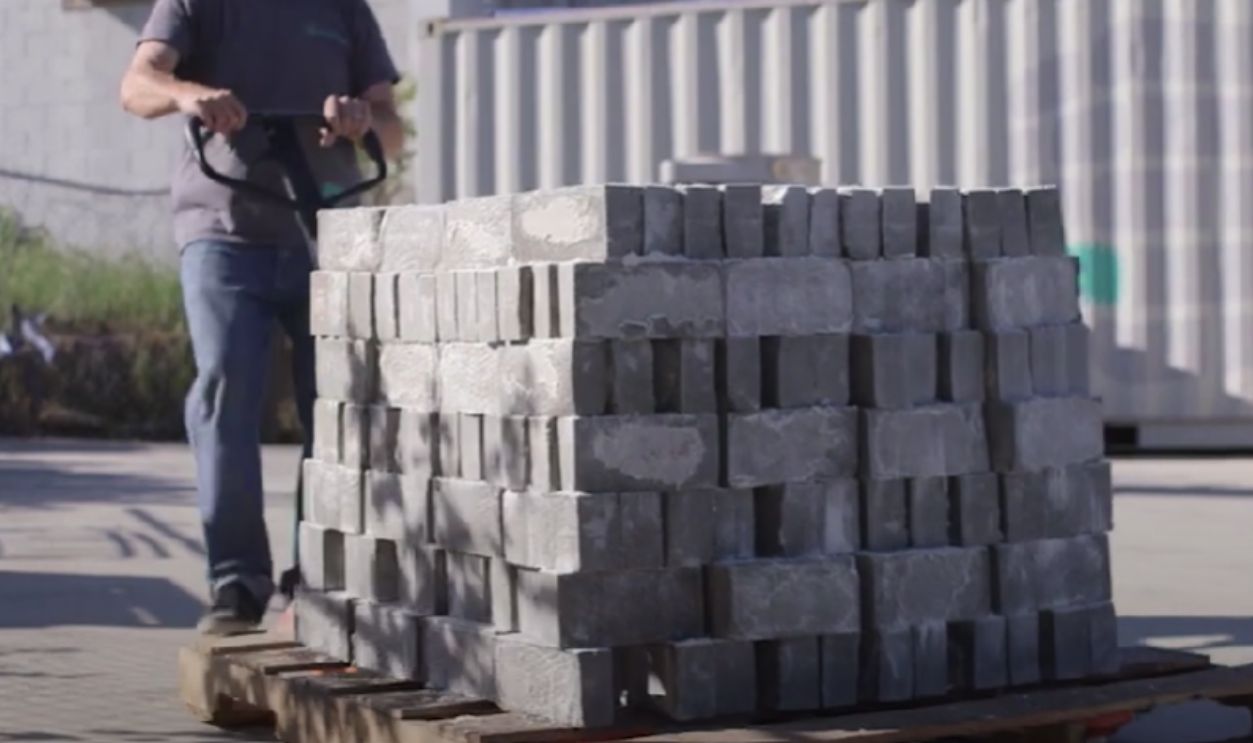 Growing bricks with bacteria -- bioMASON by U.S. National Science Foundation
Growing bricks with bacteria -- bioMASON by U.S. National Science Foundation
…But Should We Even Colonize Mars?
Colonizing Mars raises ethical questions about environmental disruption and motive. Critics argue that Mars should remain untouched for scientific study, while others believe colonization could preserve human life. The balance between exploration and exploitation will shape how and whether we move forward on alien ground.
Who Gets To Claim The Land?
International law, including the Outer Space Treaty of 1967, prohibits national sovereignty in space. But the rise of private companies complicates matters. Without enforcement mechanisms or updated regulations, disputes over Martian resources and land use could emerge as missions become more commercially driven.
Who Makes The Rules On Mars?
Mars governance is a blank slate. Will future settlers adopt Earth's political models or create something new? Space agencies and international bodies all have stakes. The challenge lies in balancing authority and autonomy without replicating Earth's geopolitical divisions.
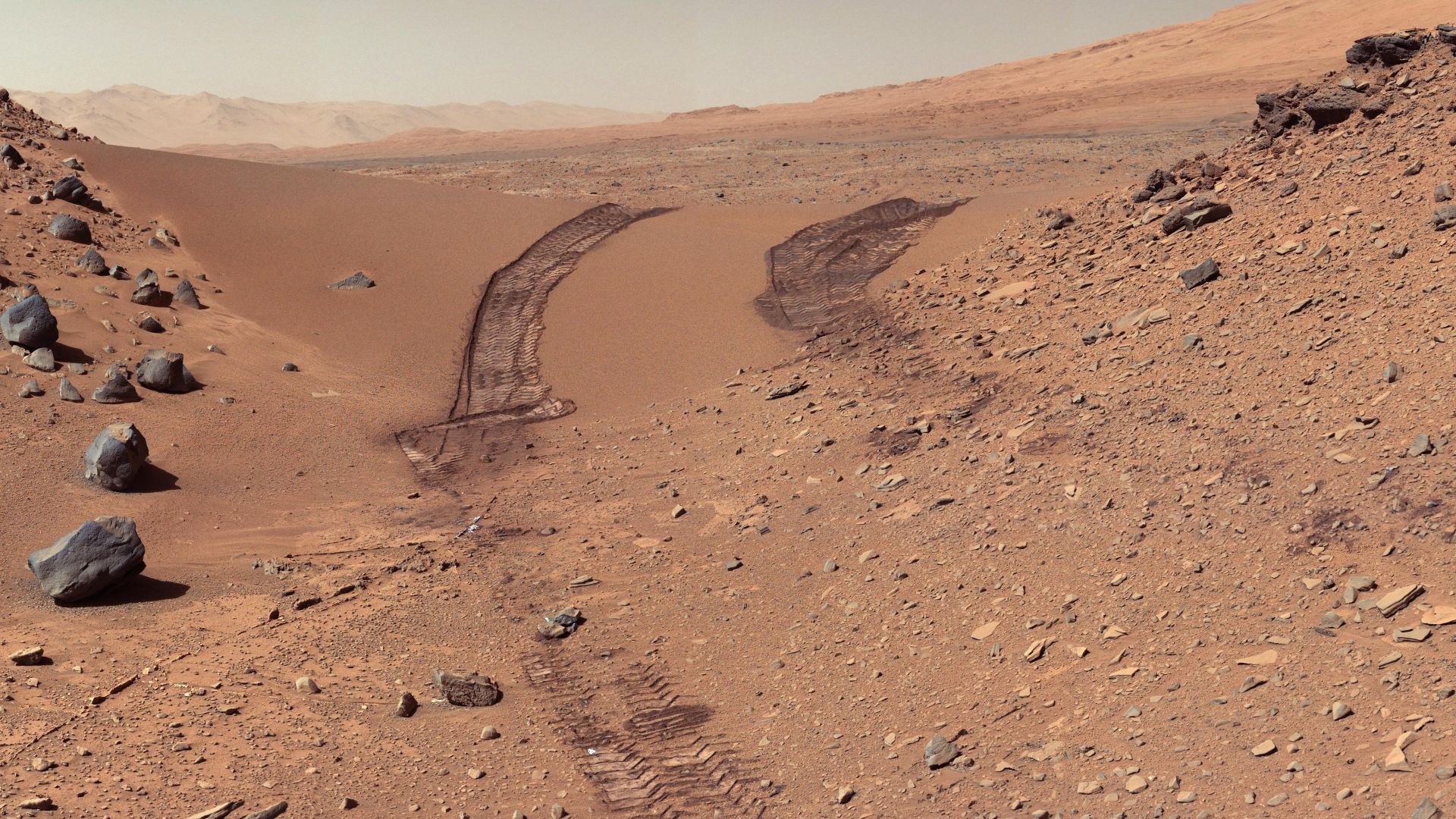 NASA/JPL-Caltech/MSSS, Wikimedia Commons
NASA/JPL-Caltech/MSSS, Wikimedia Commons


